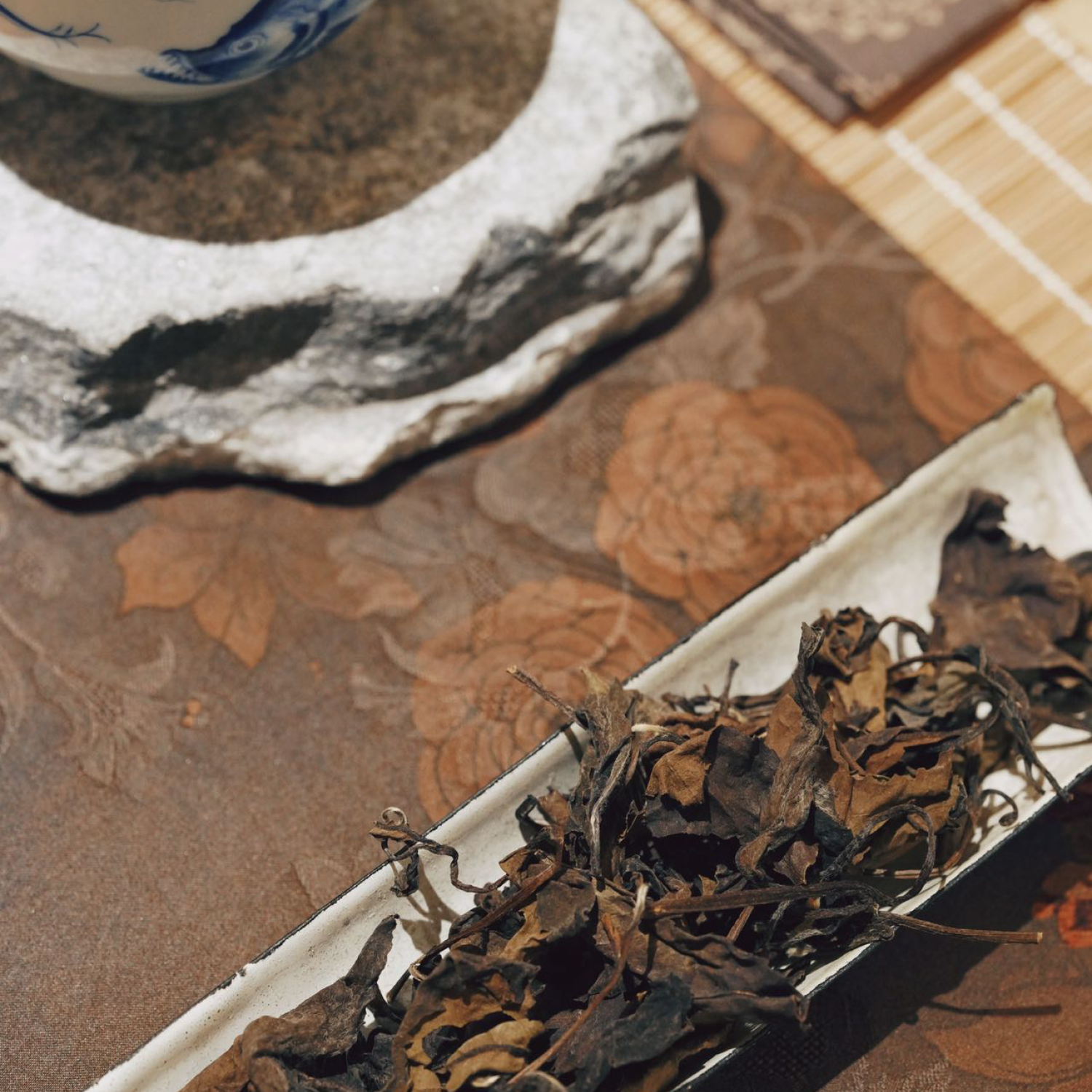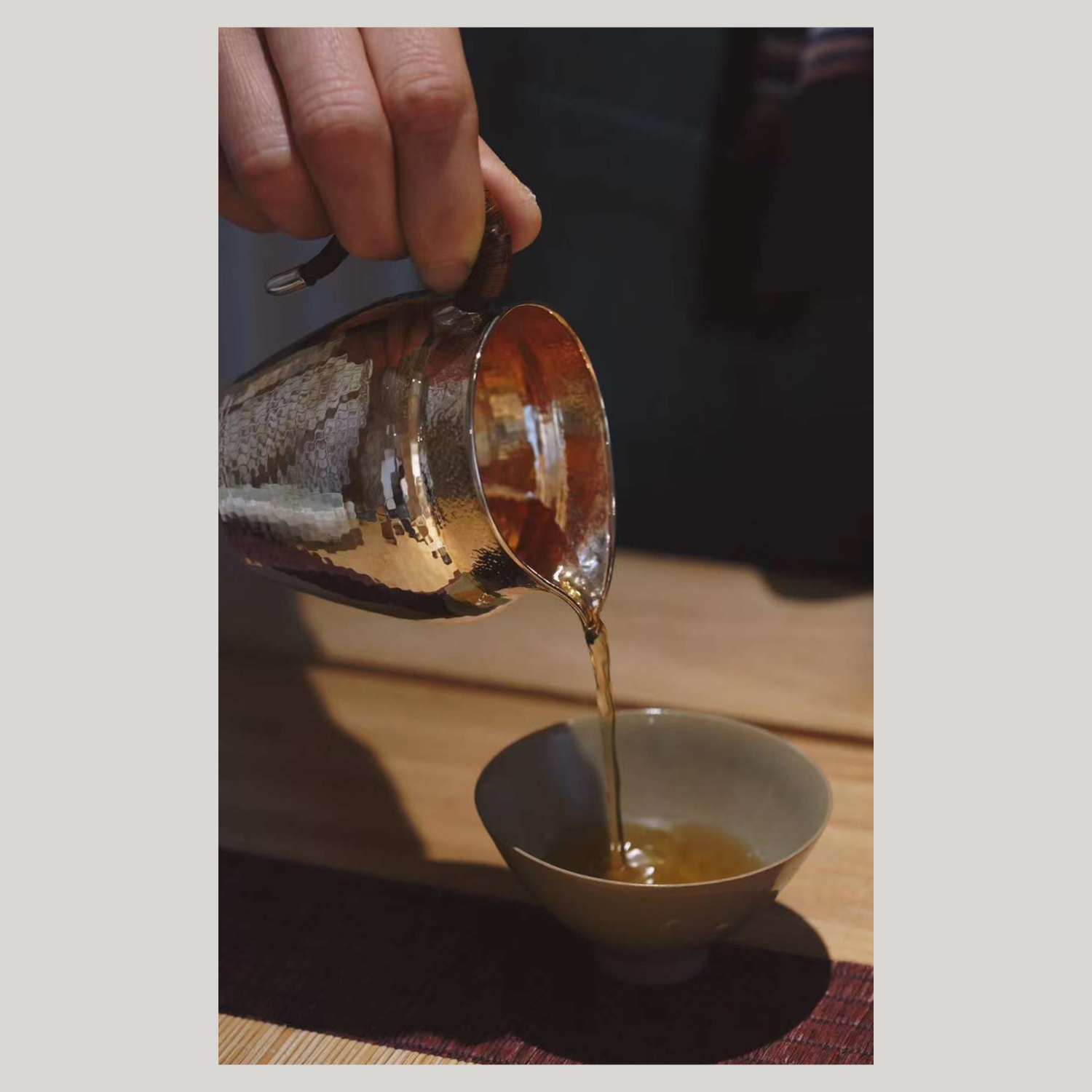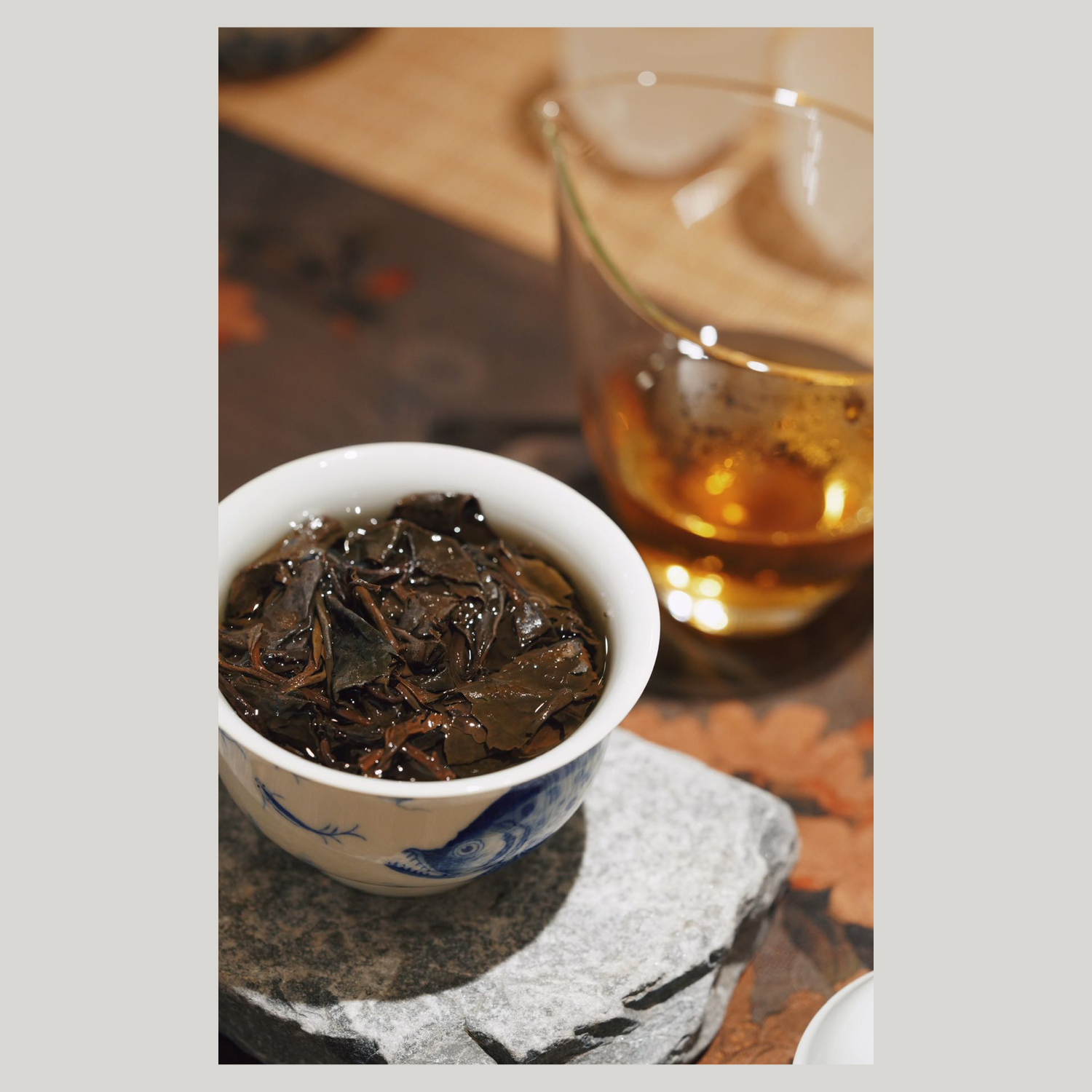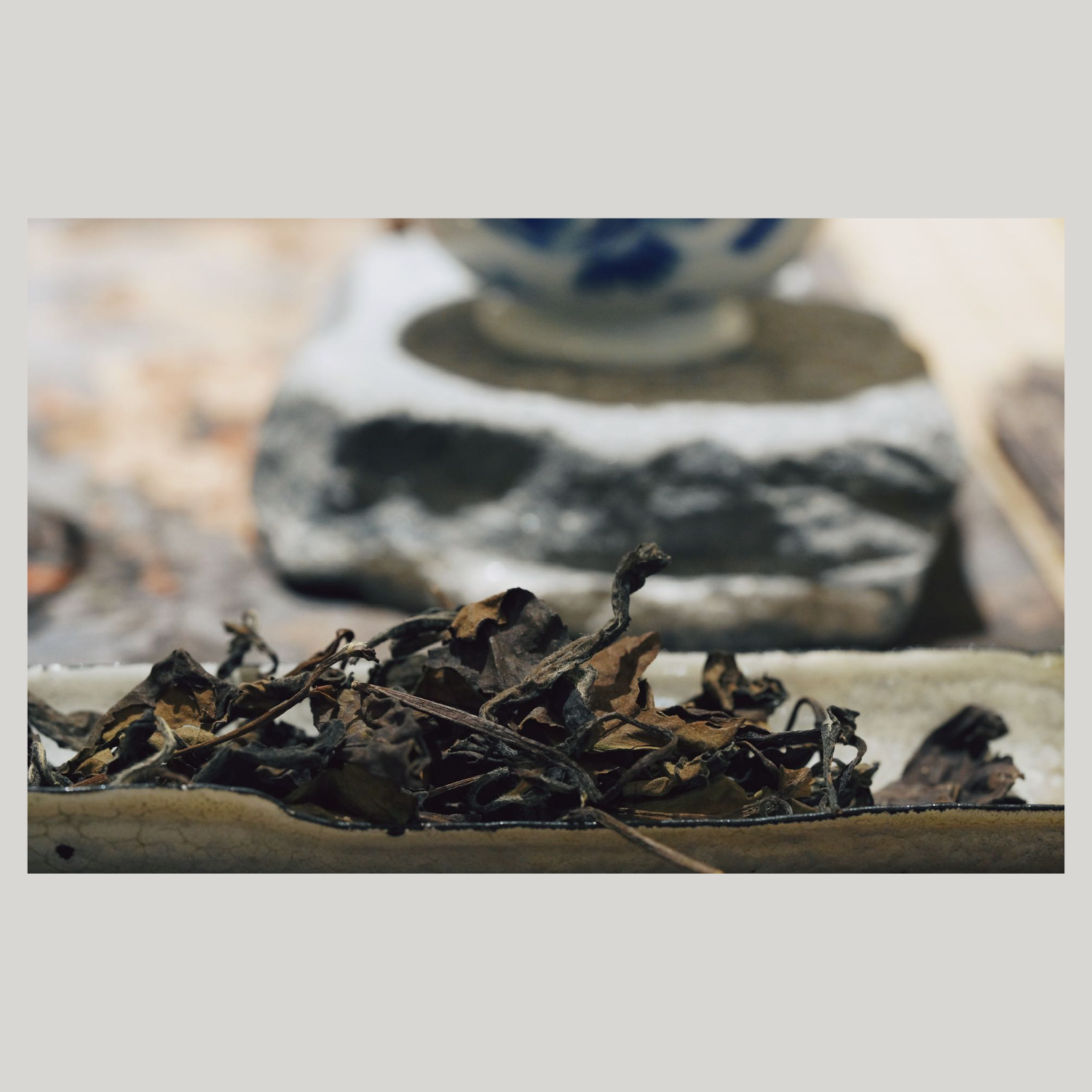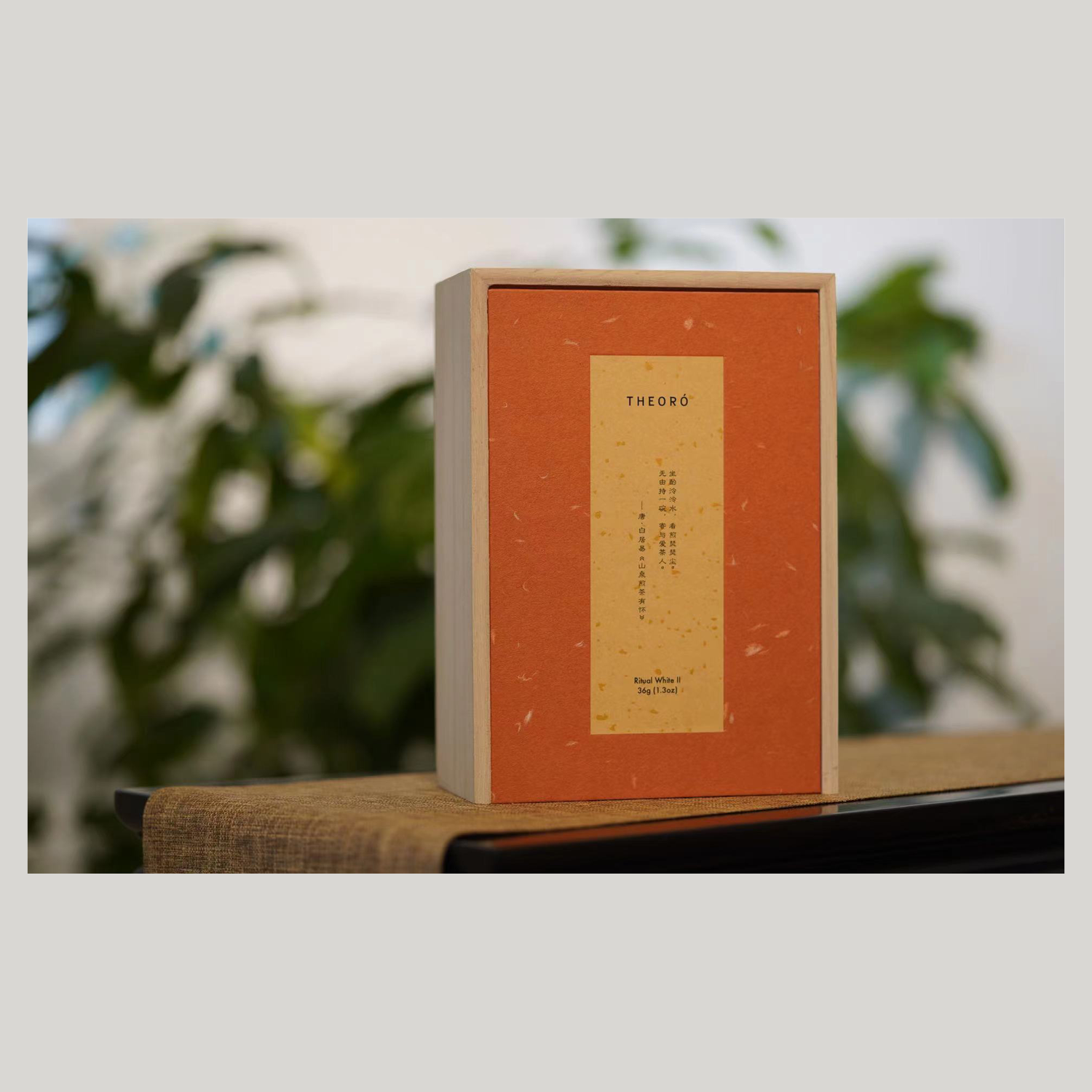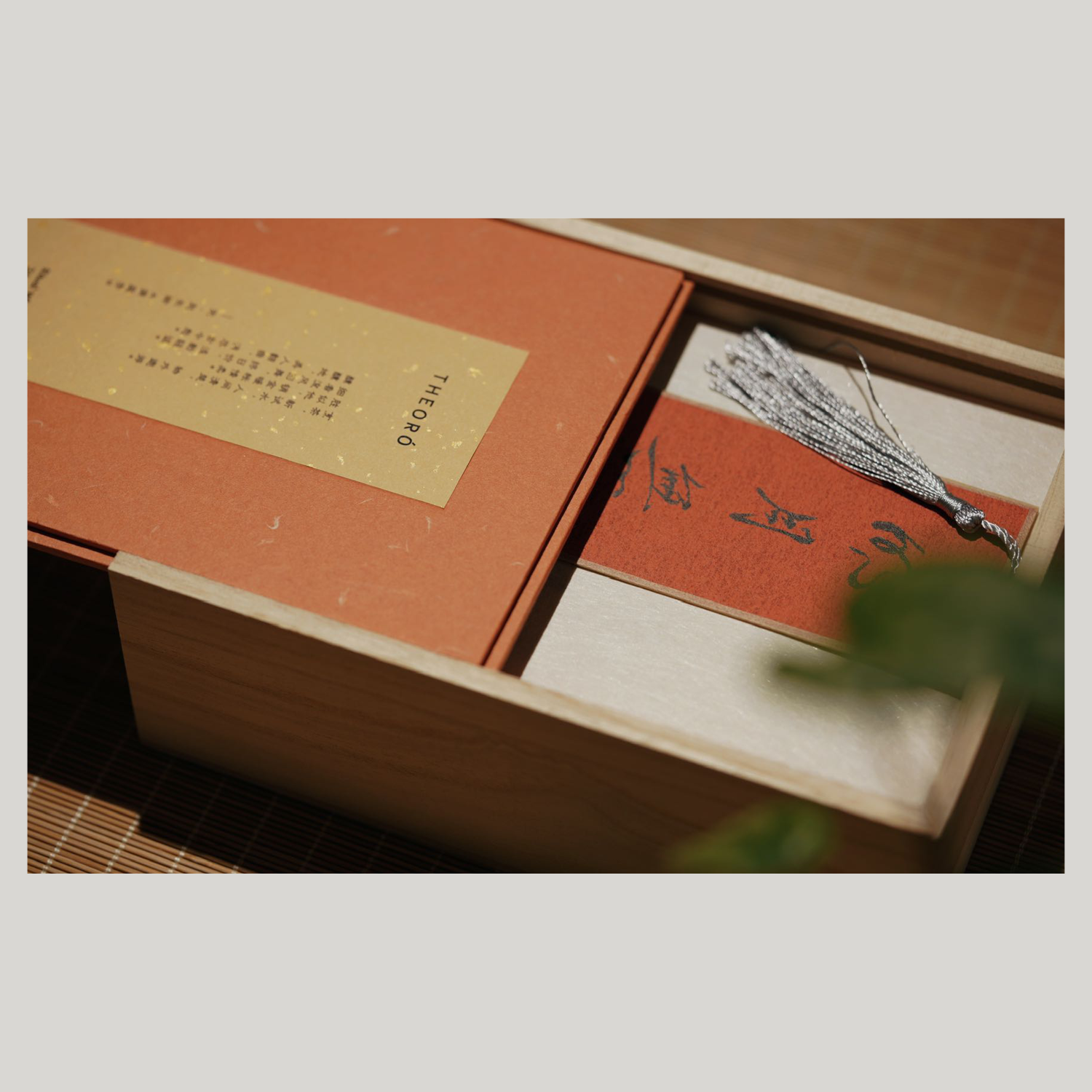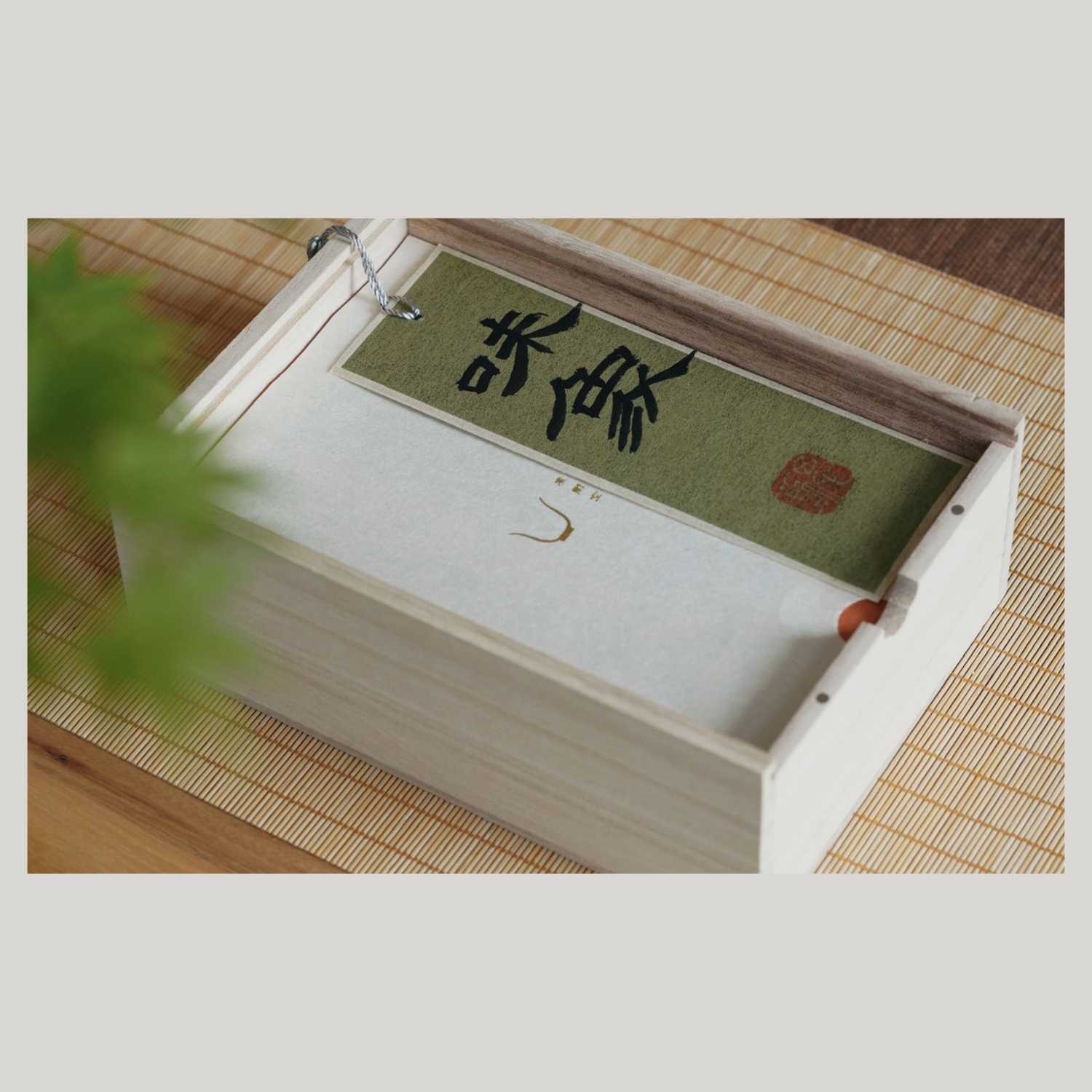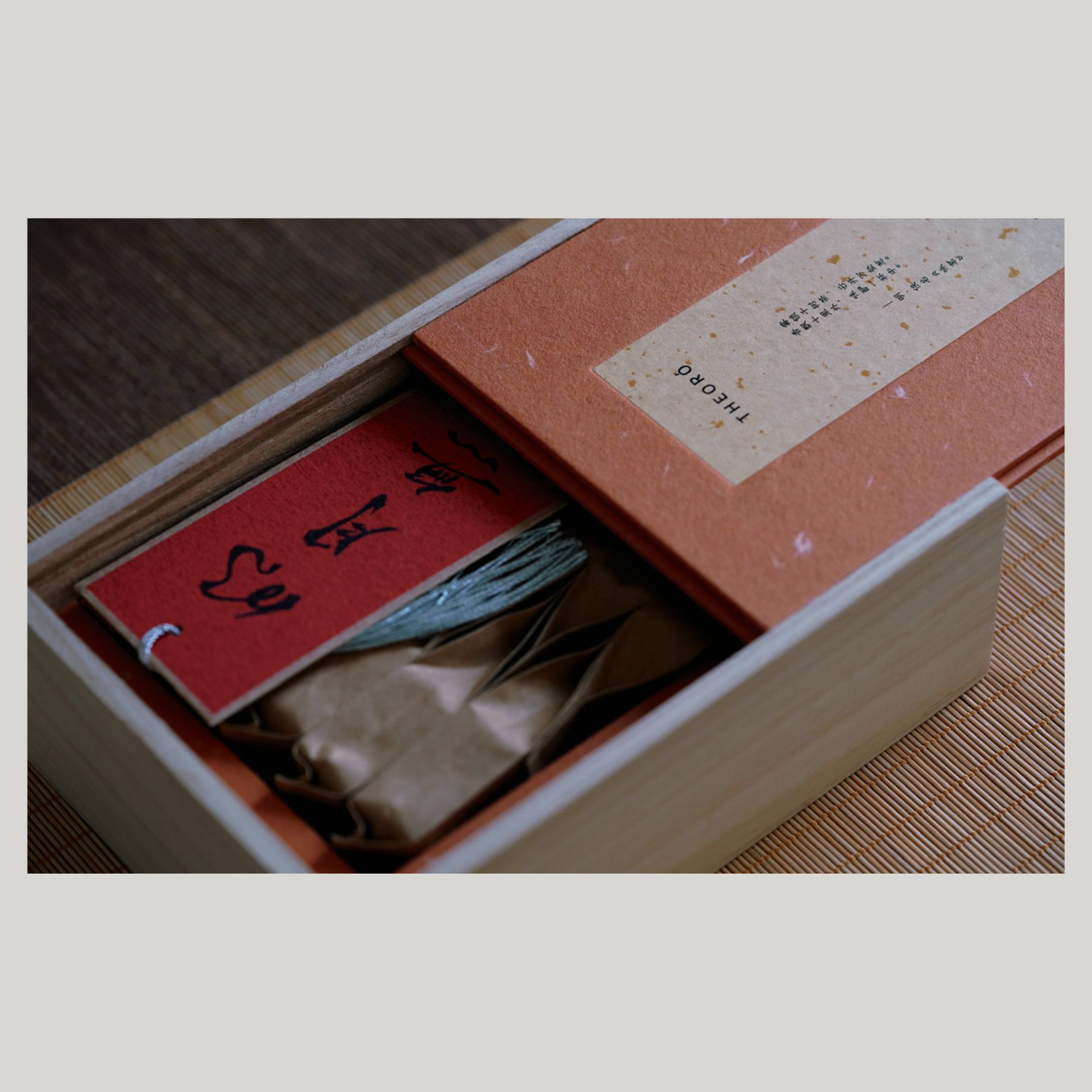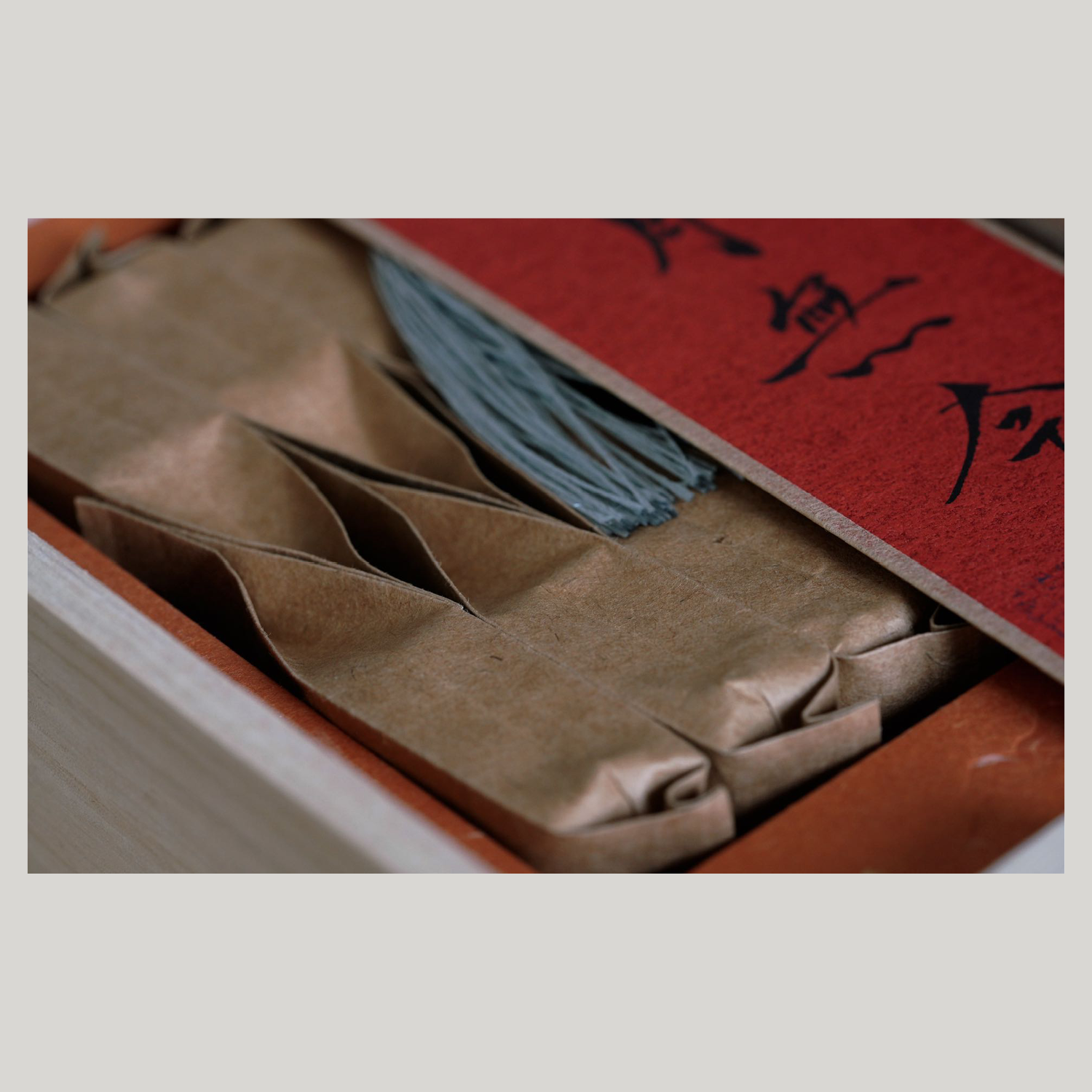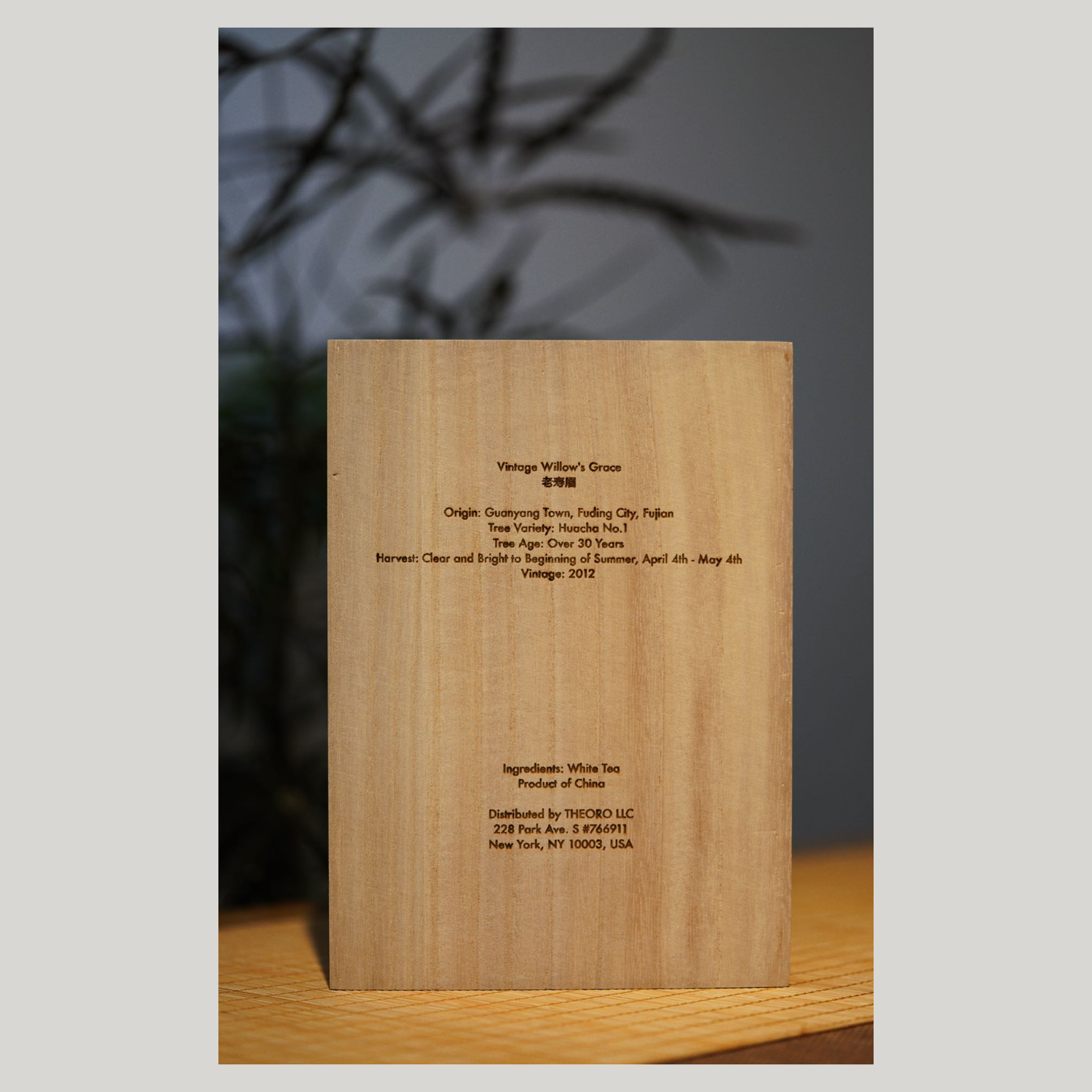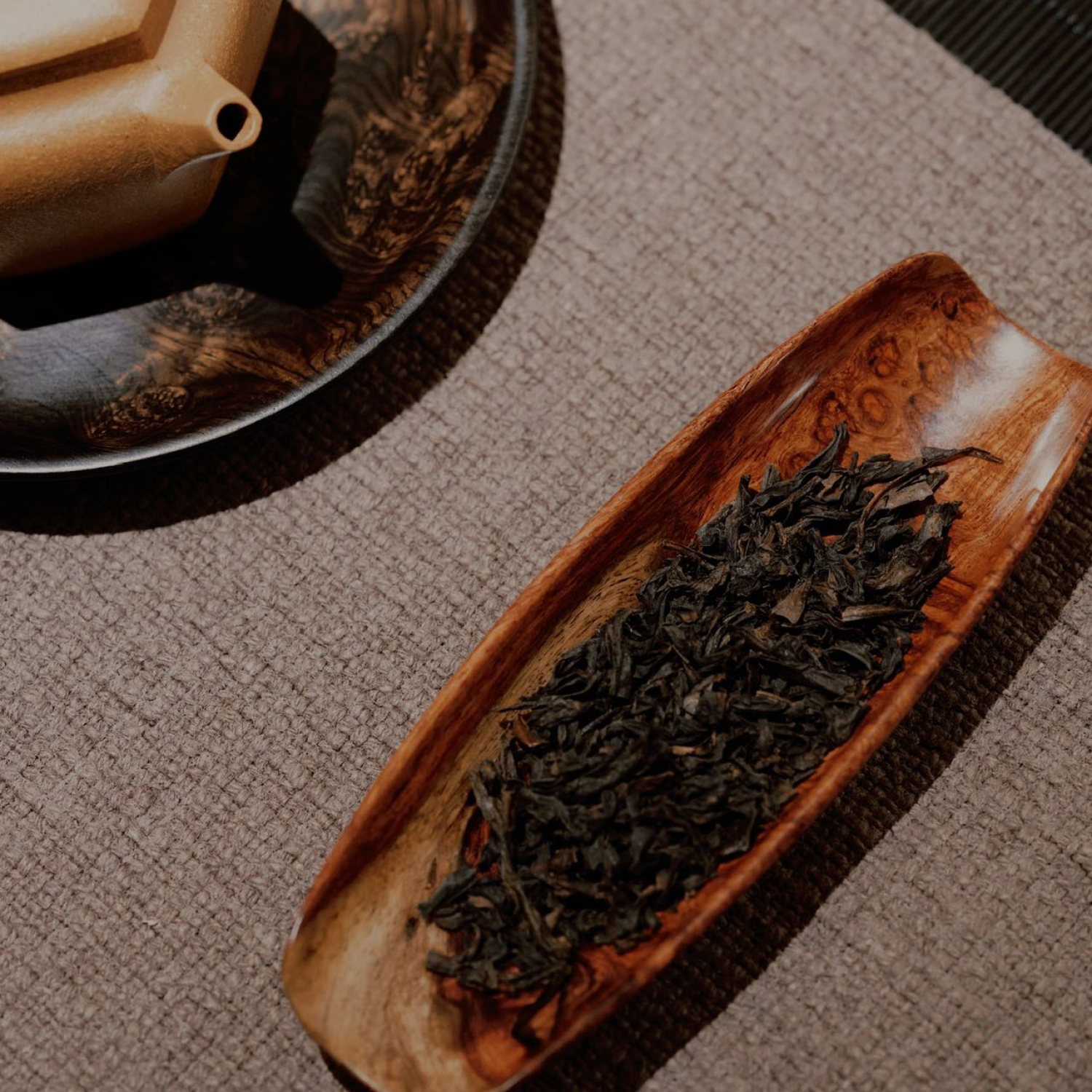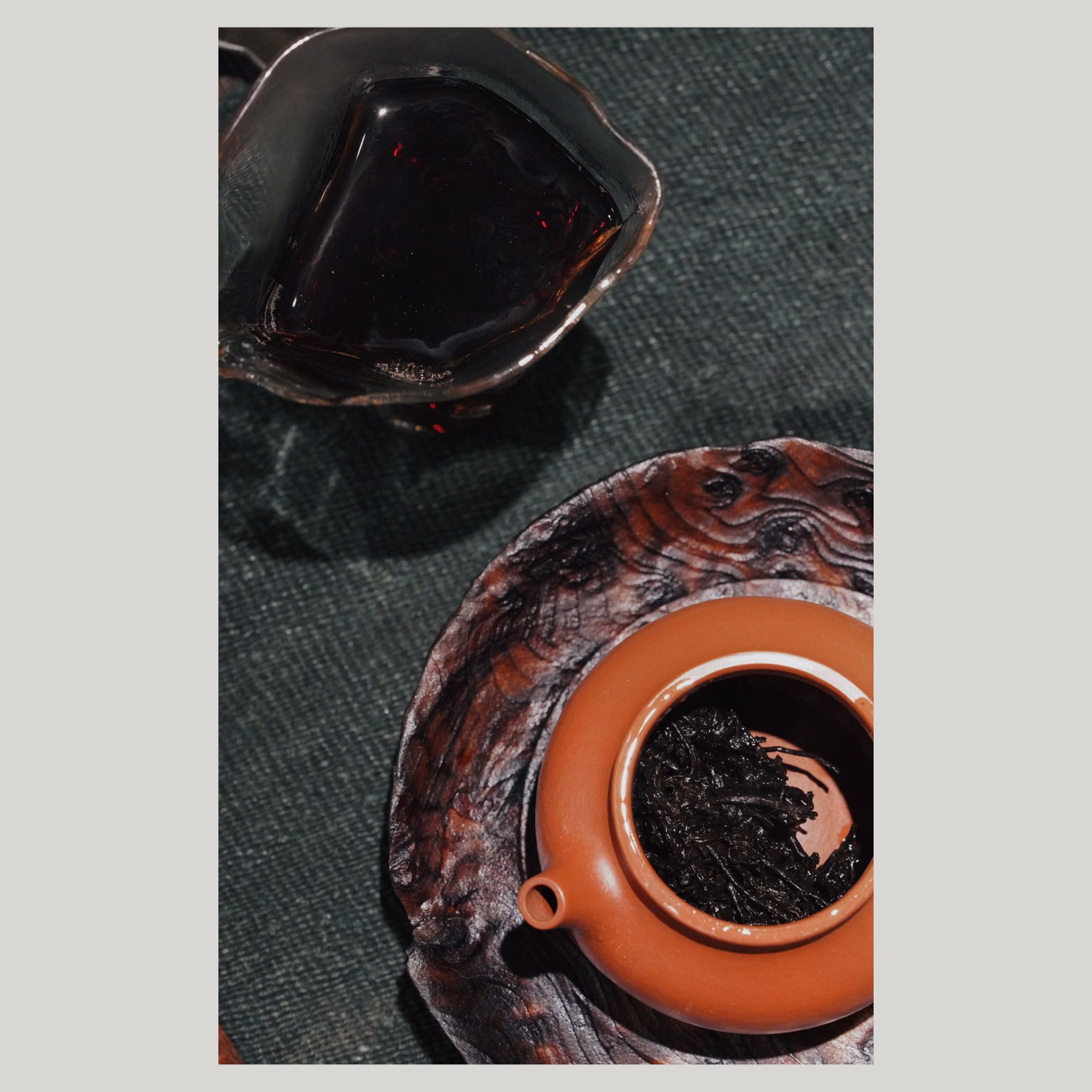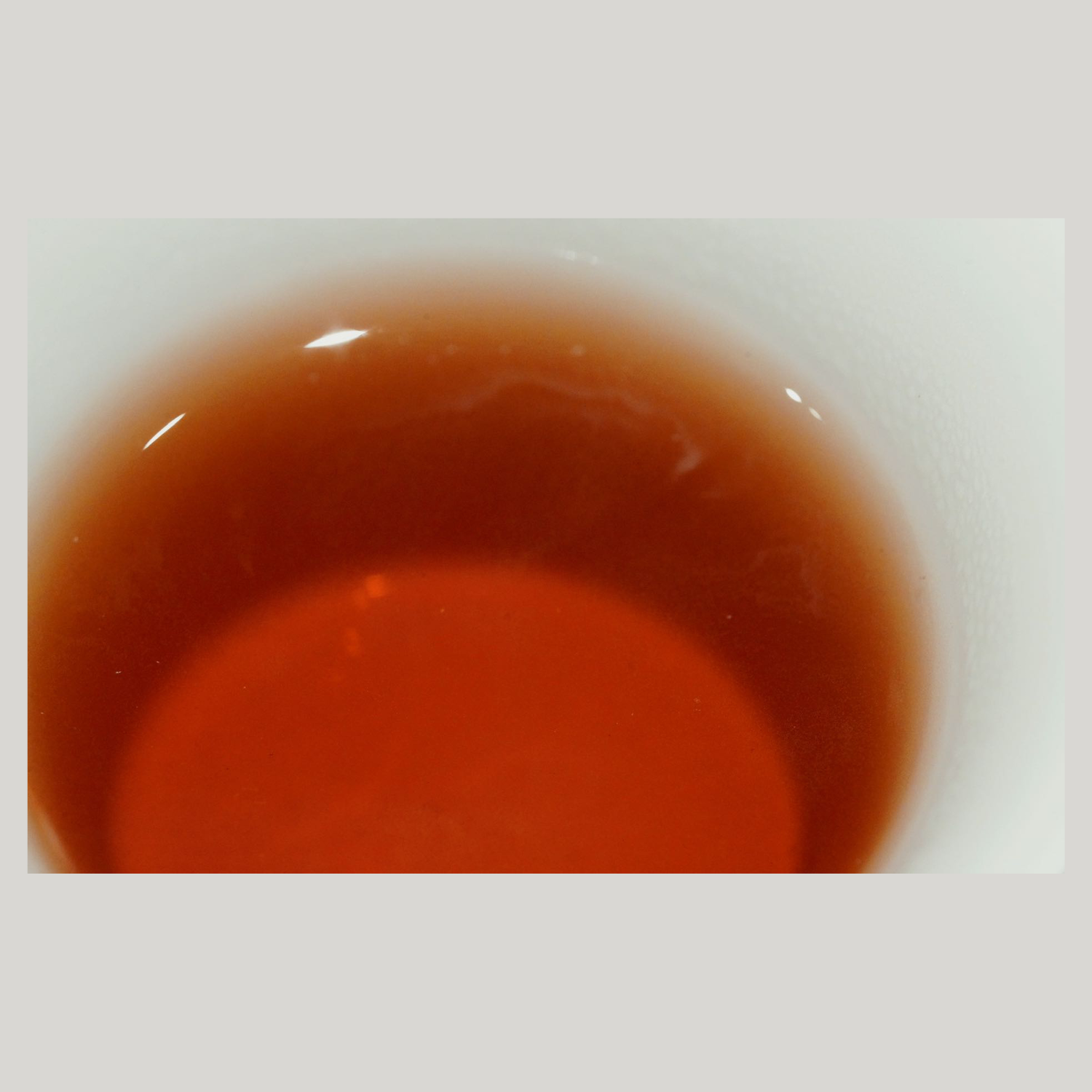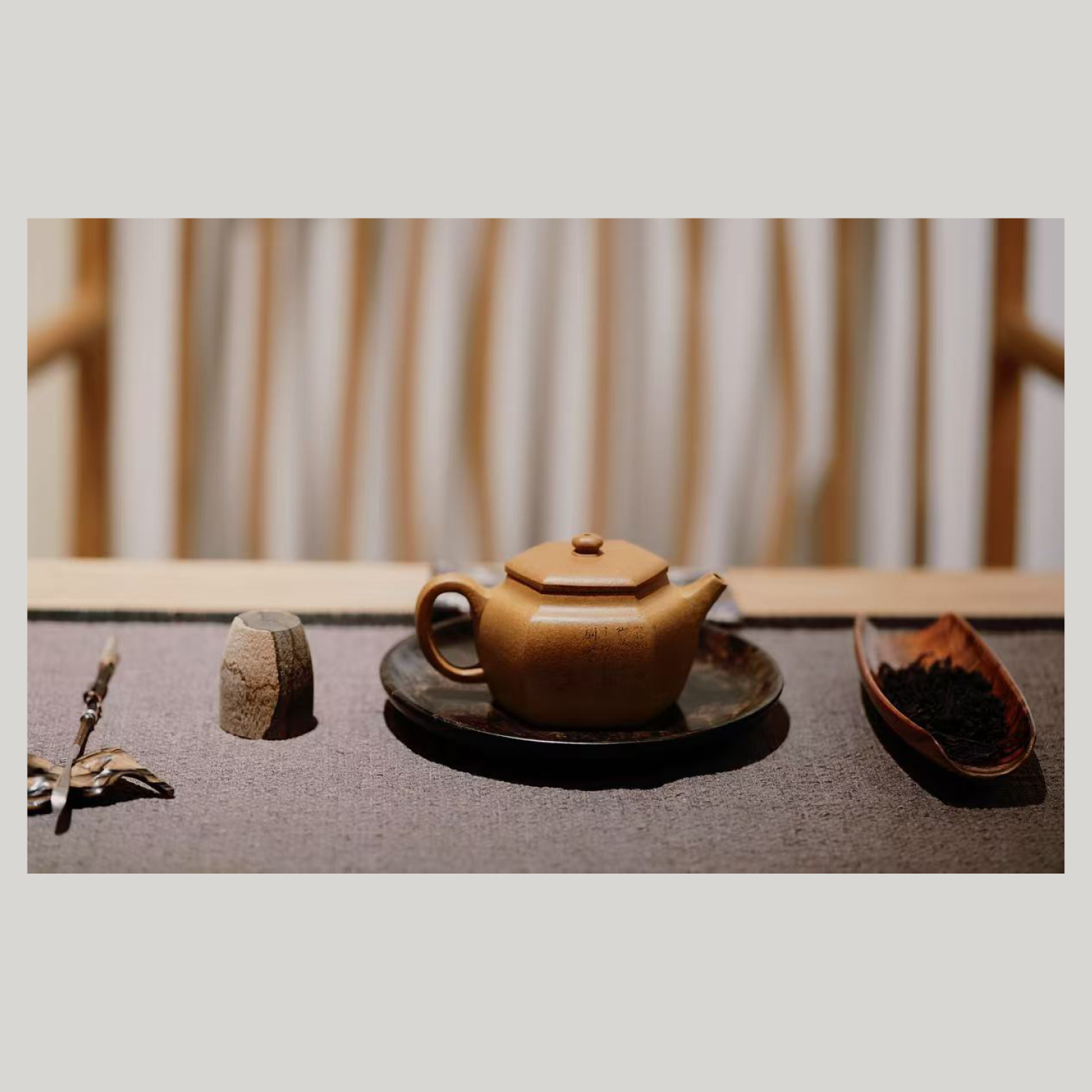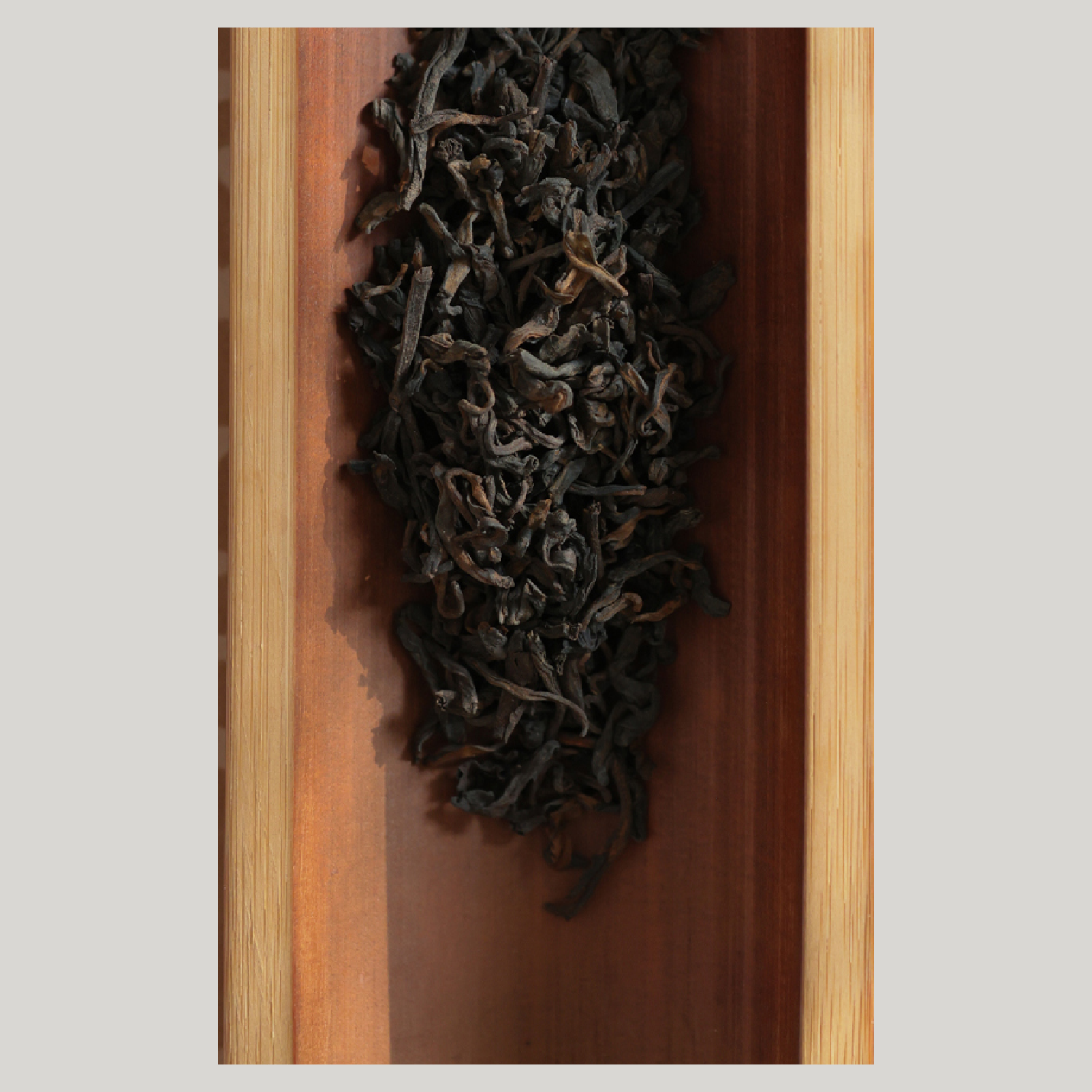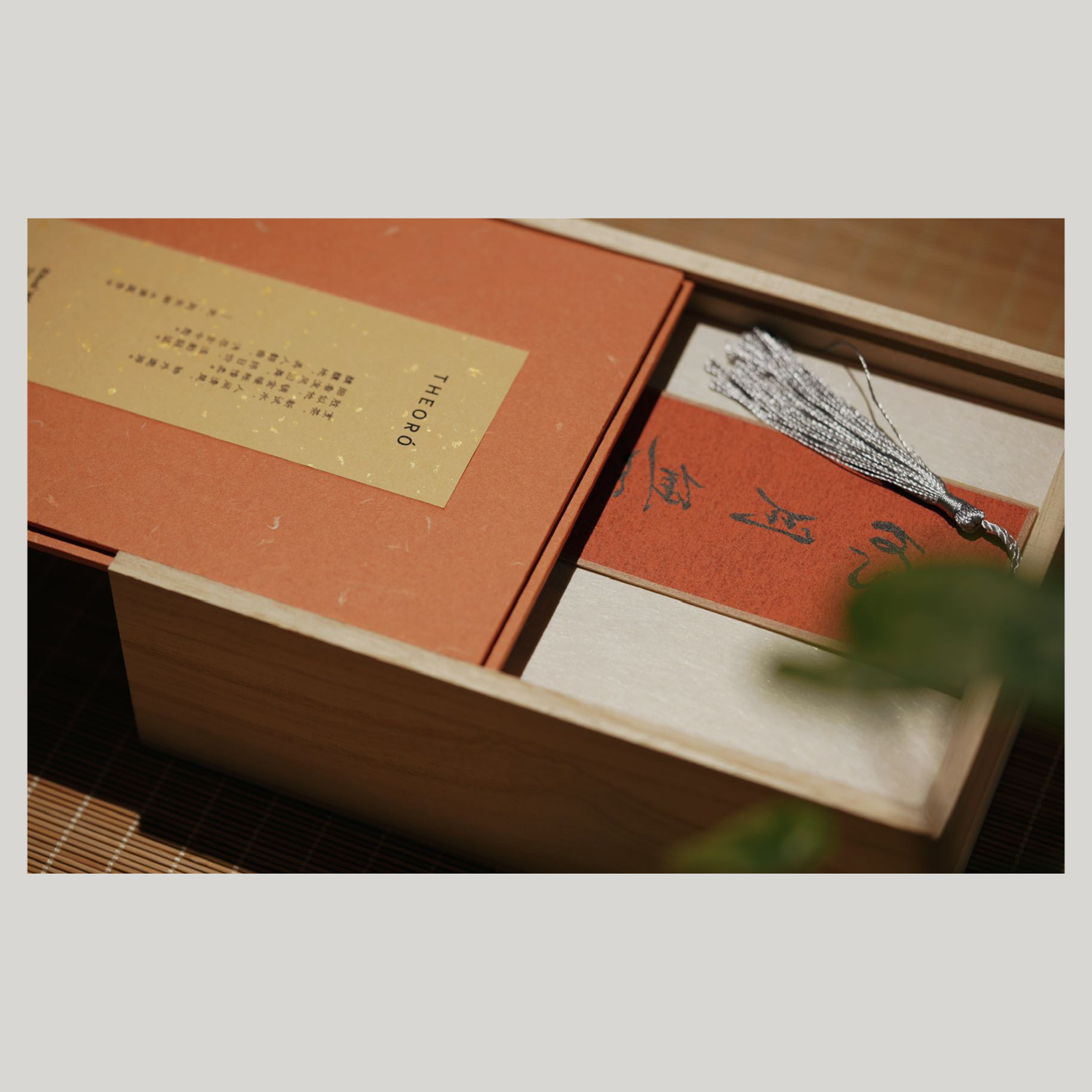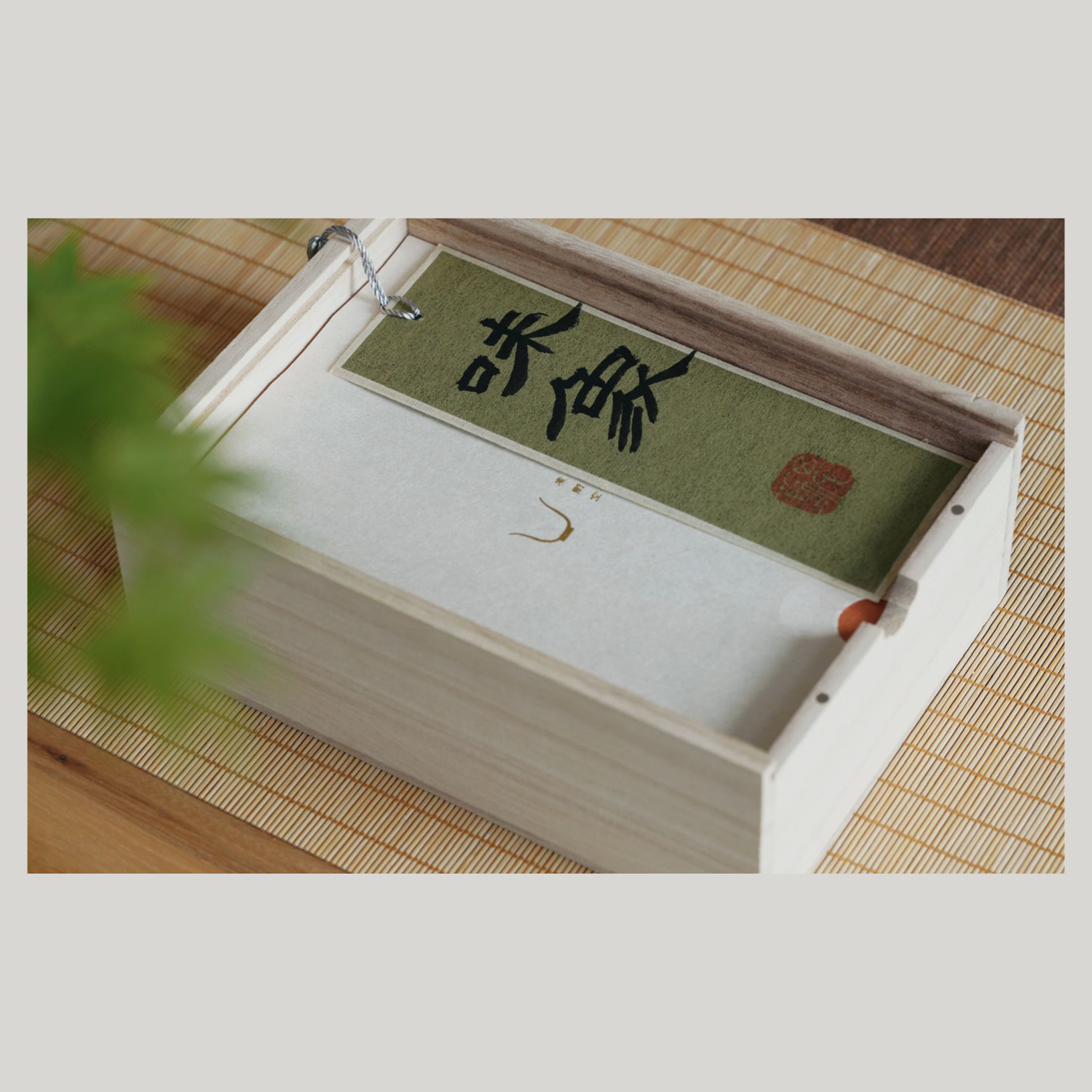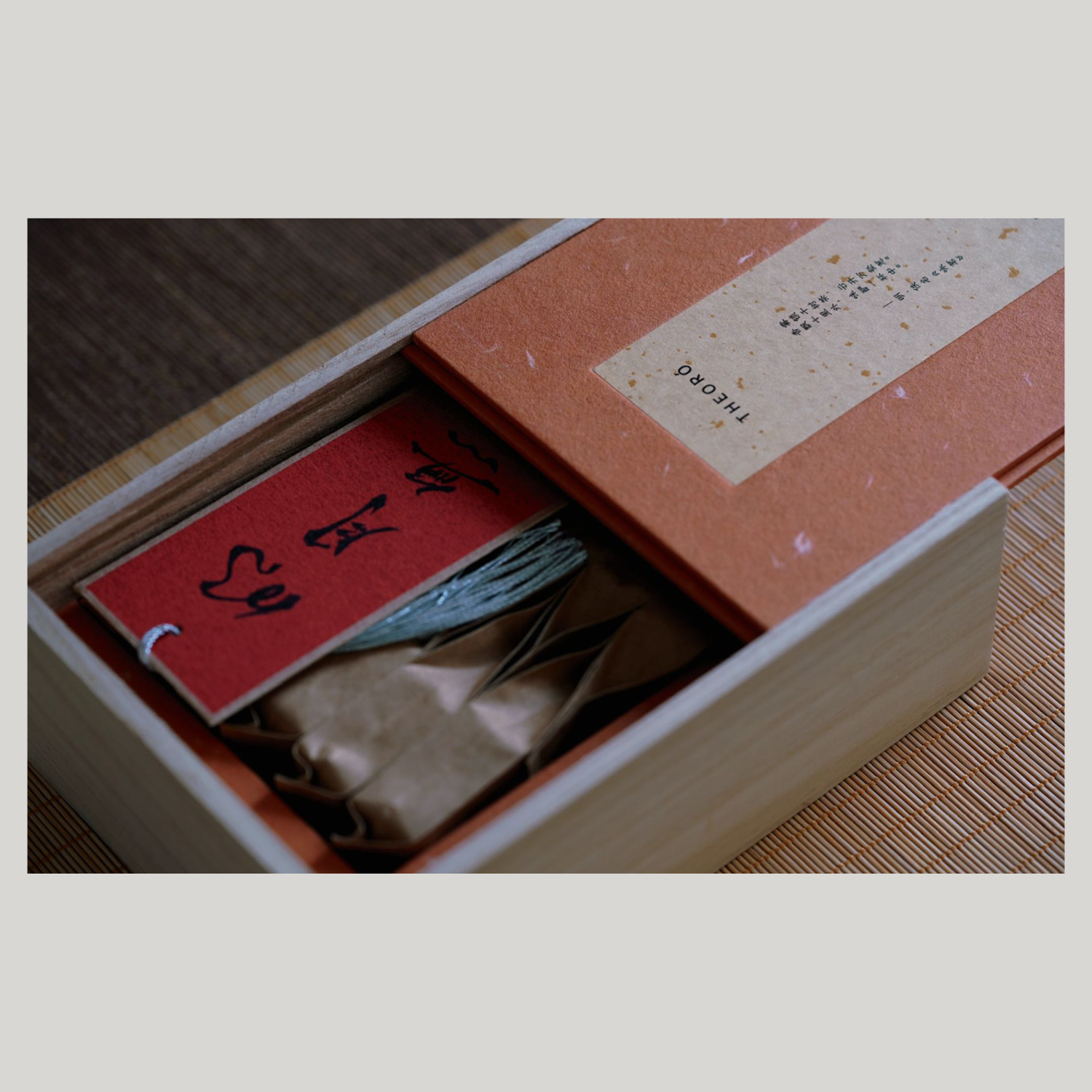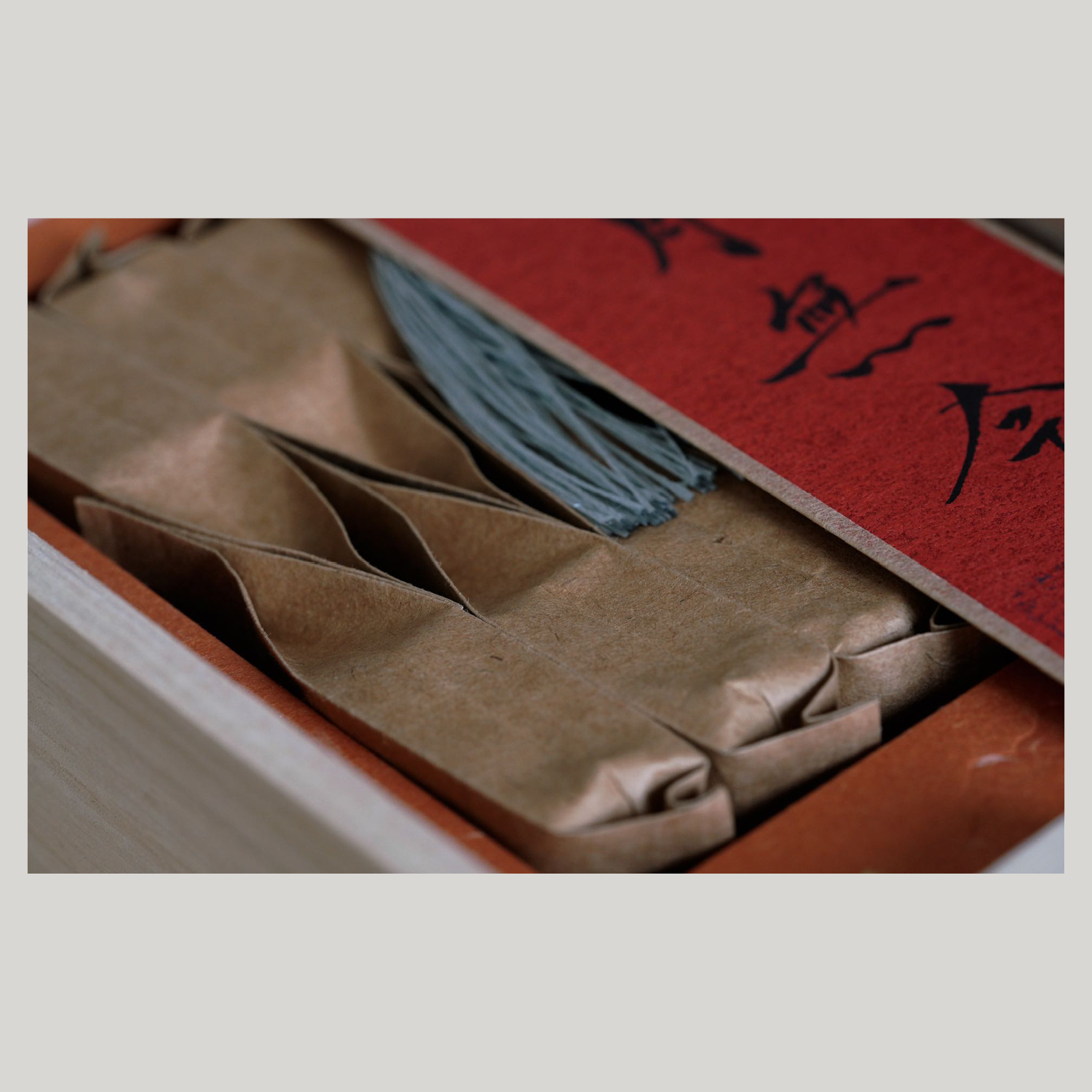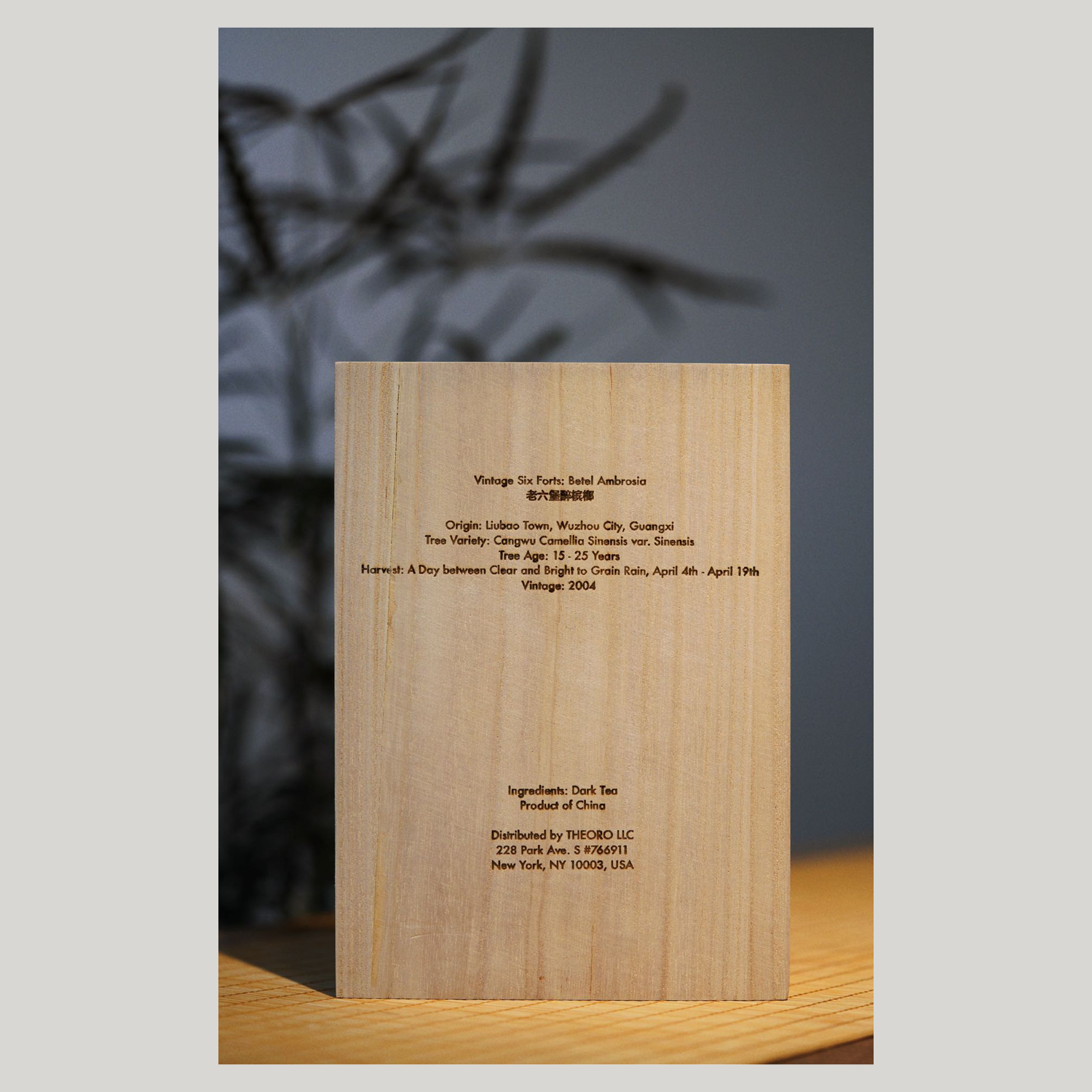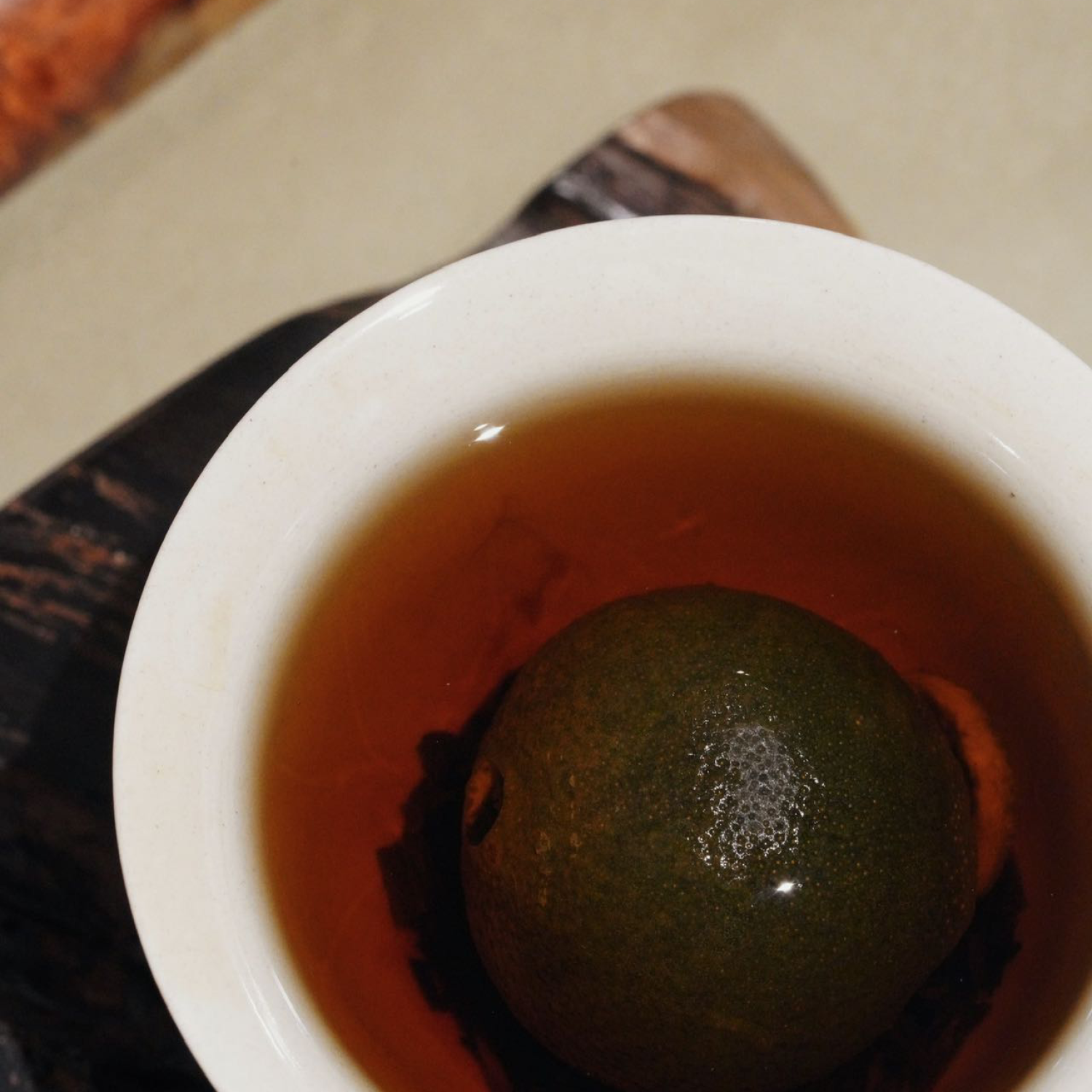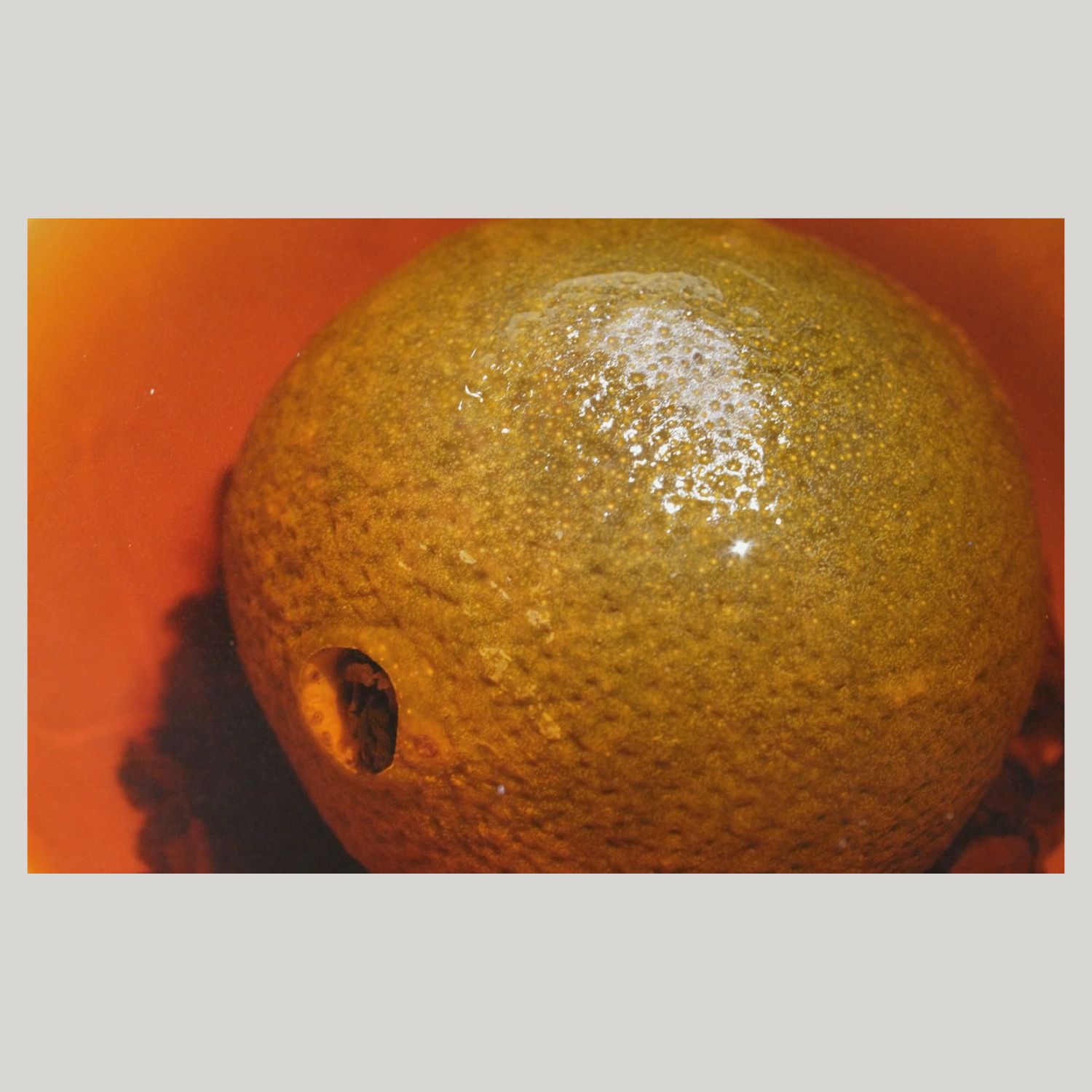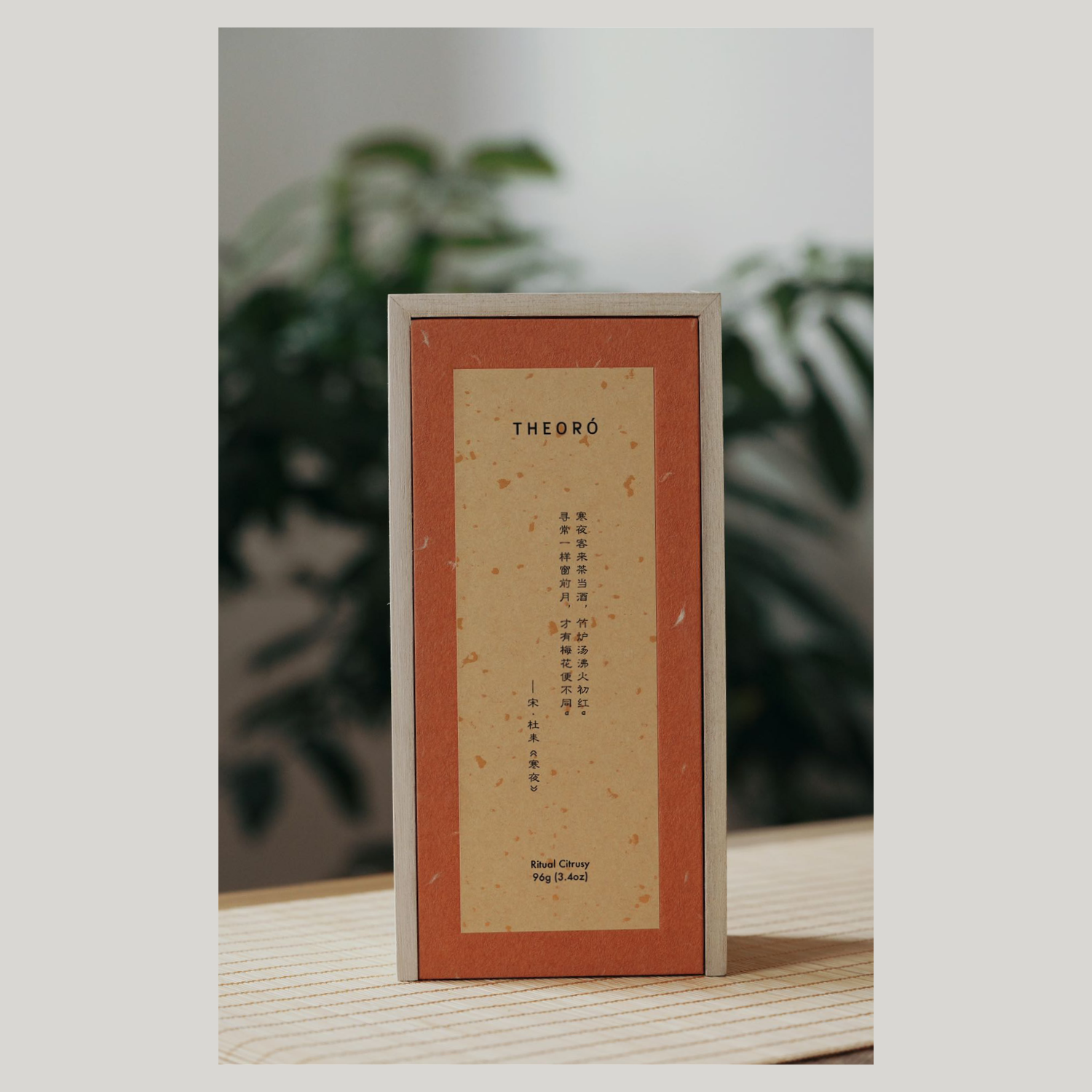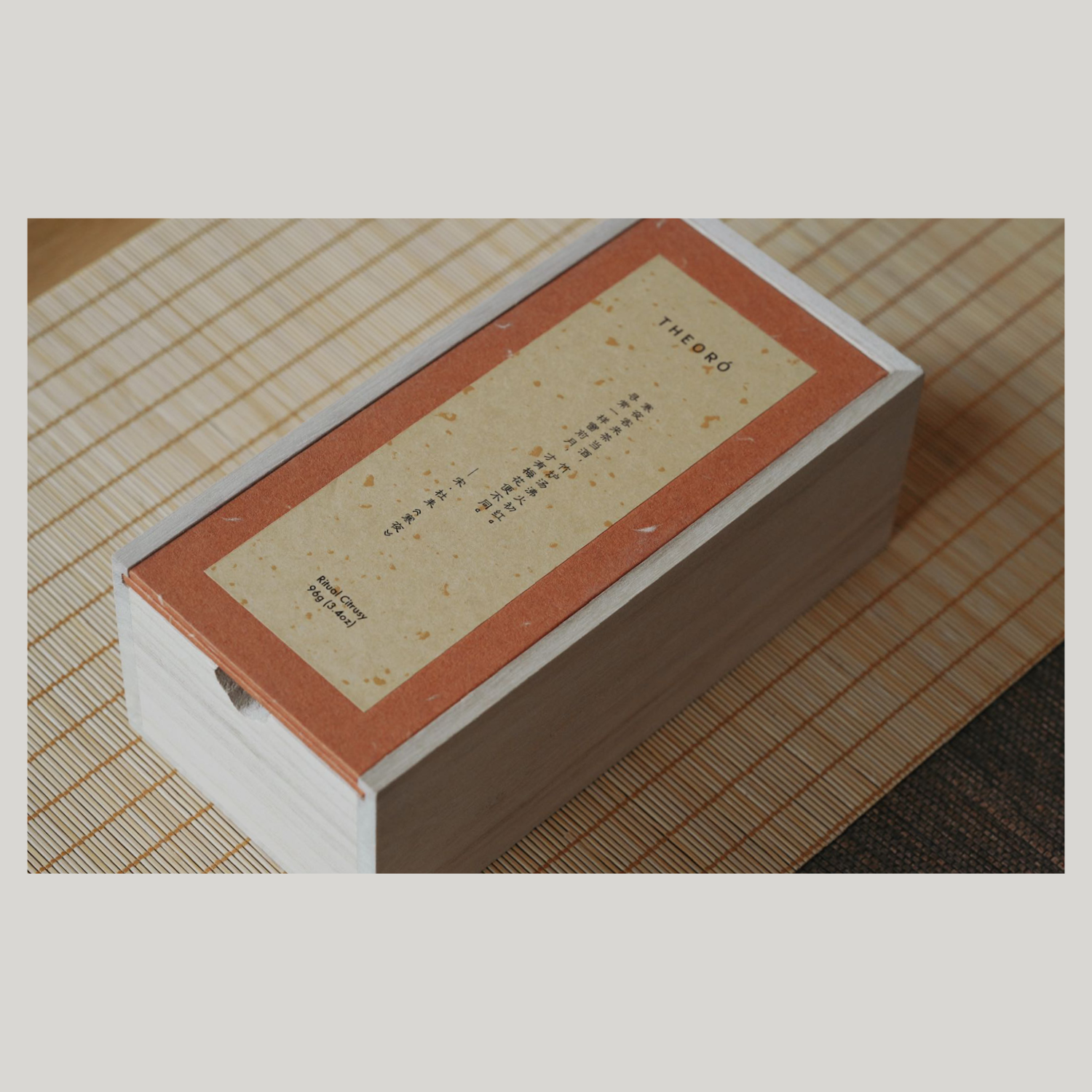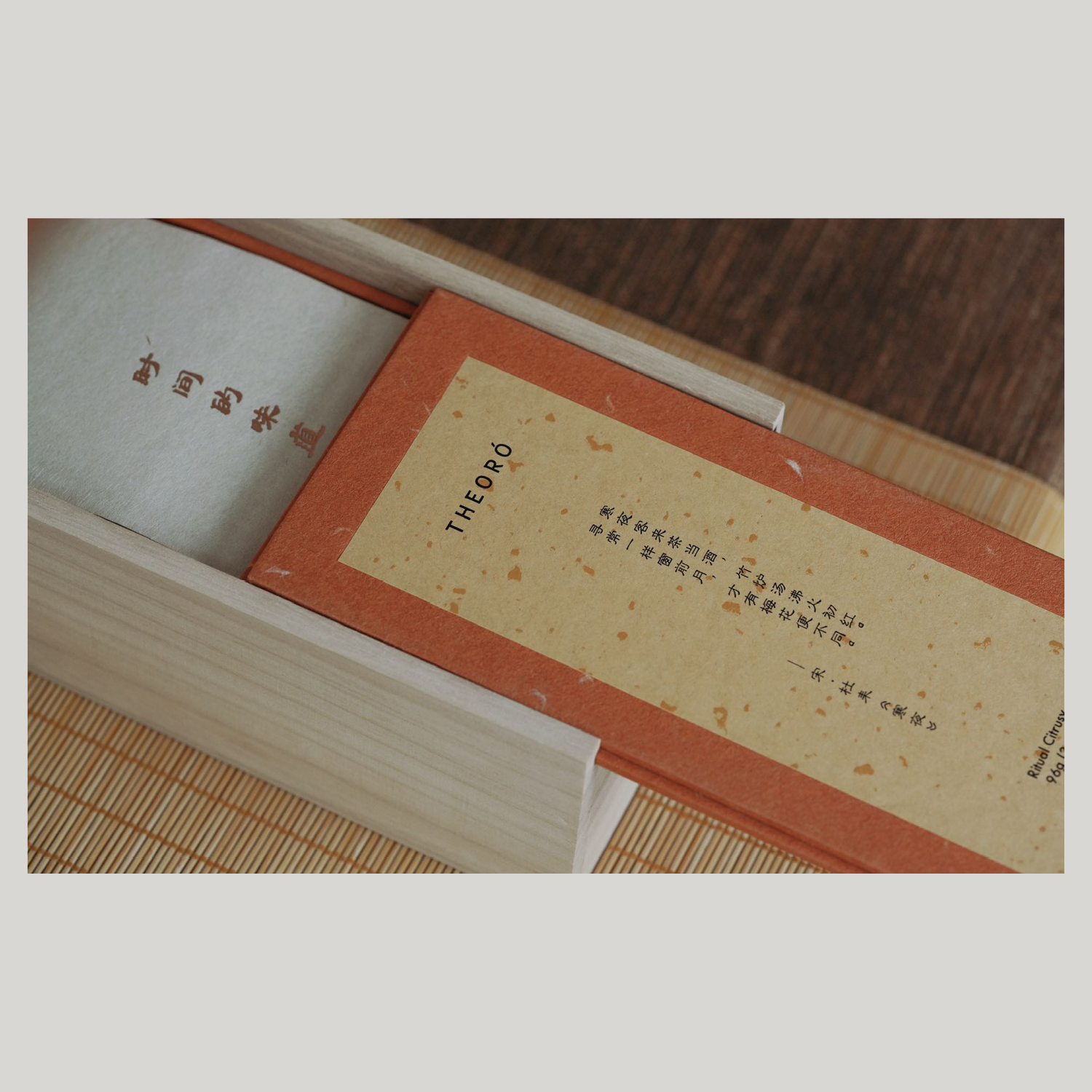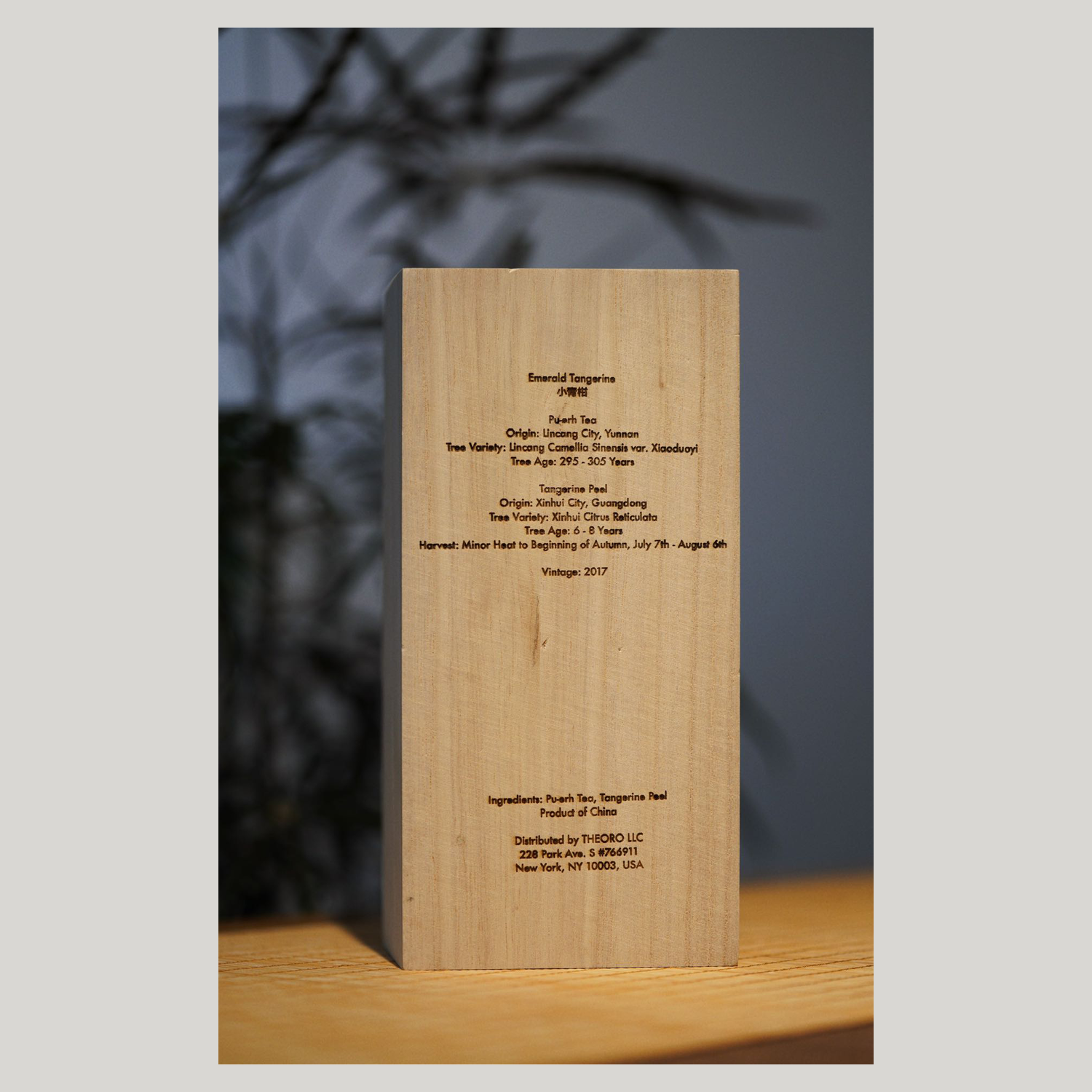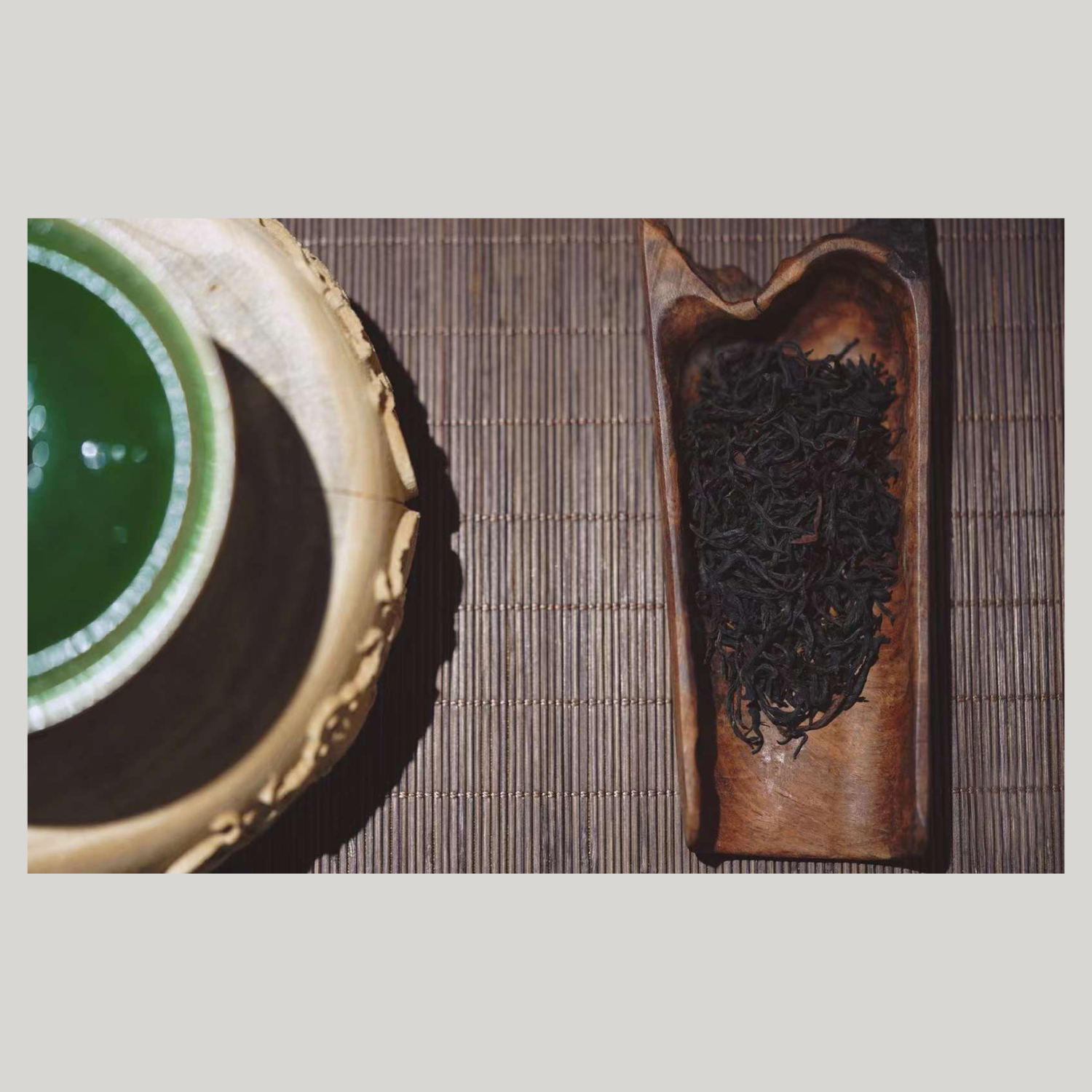 Image 1 of 11
Image 1 of 11

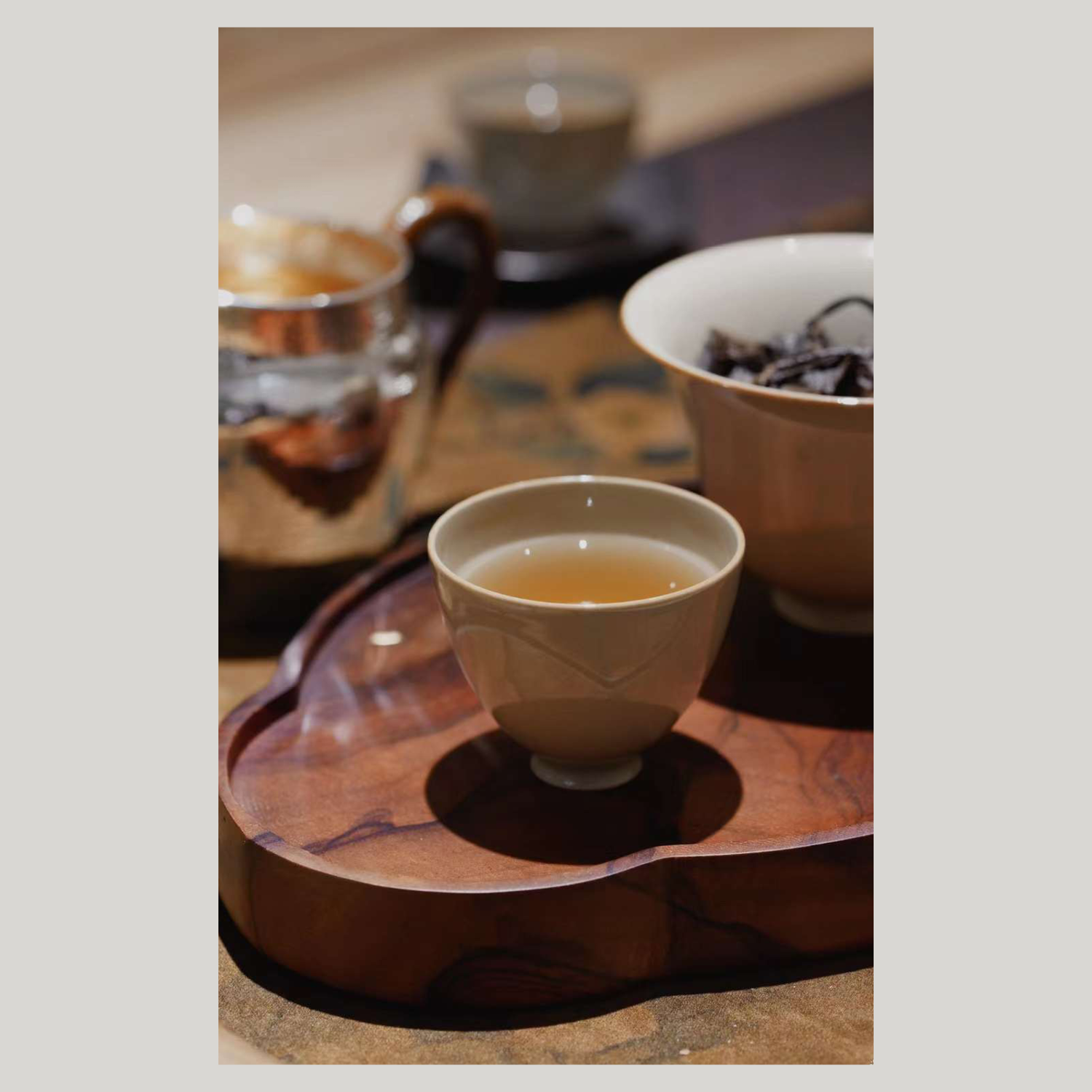 Image 2 of 11
Image 2 of 11

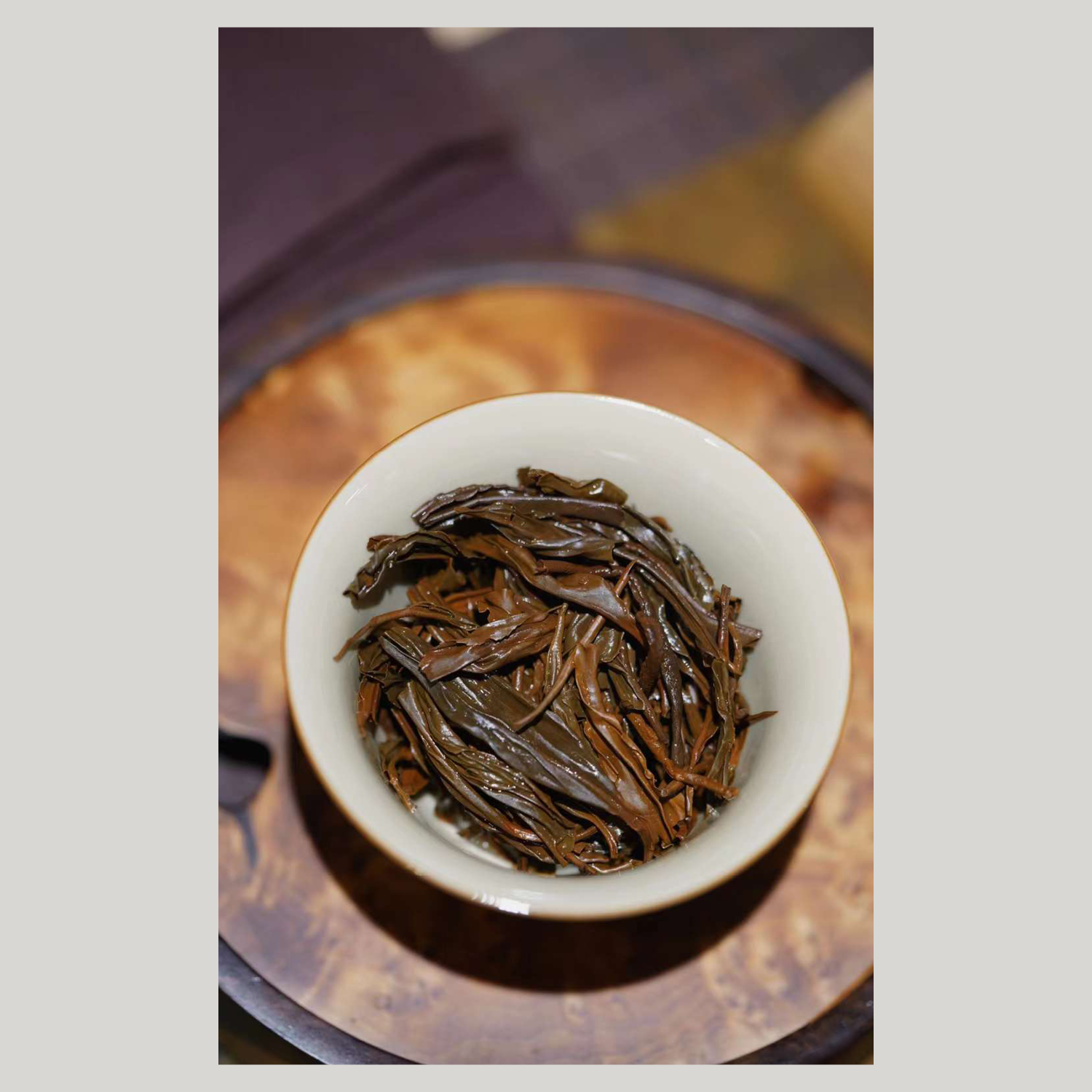 Image 3 of 11
Image 3 of 11

 Image 4 of 11
Image 4 of 11

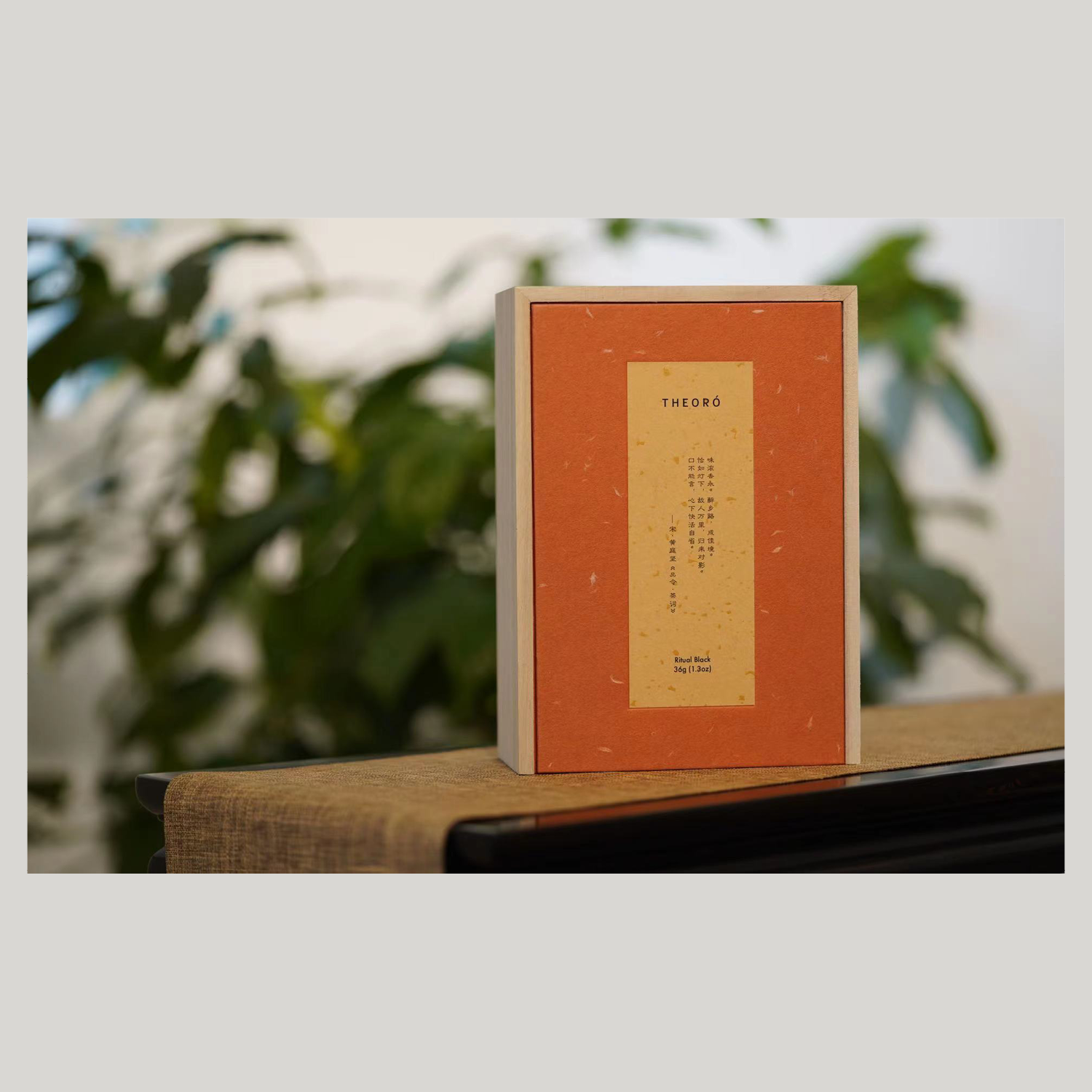 Image 5 of 11
Image 5 of 11

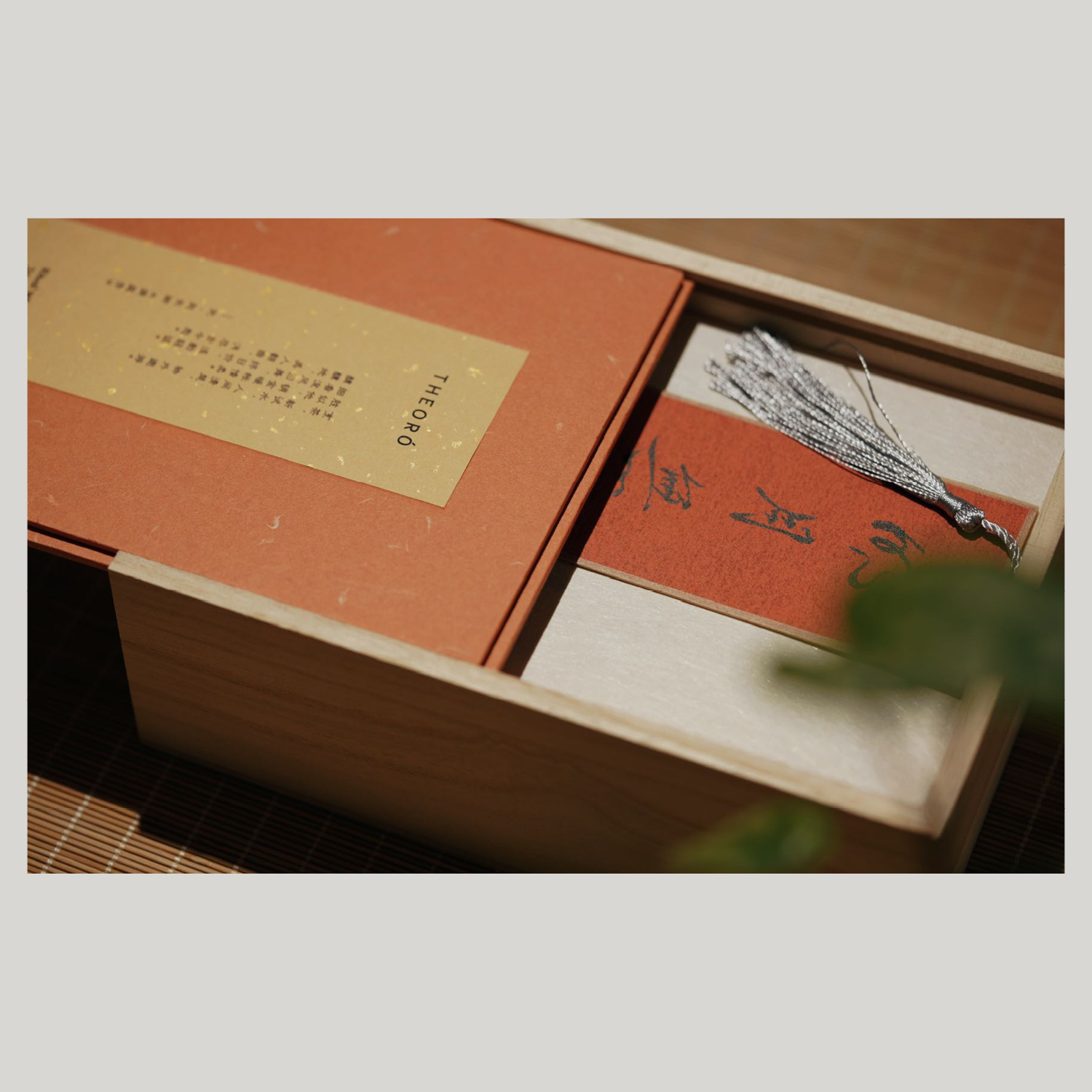 Image 6 of 11
Image 6 of 11

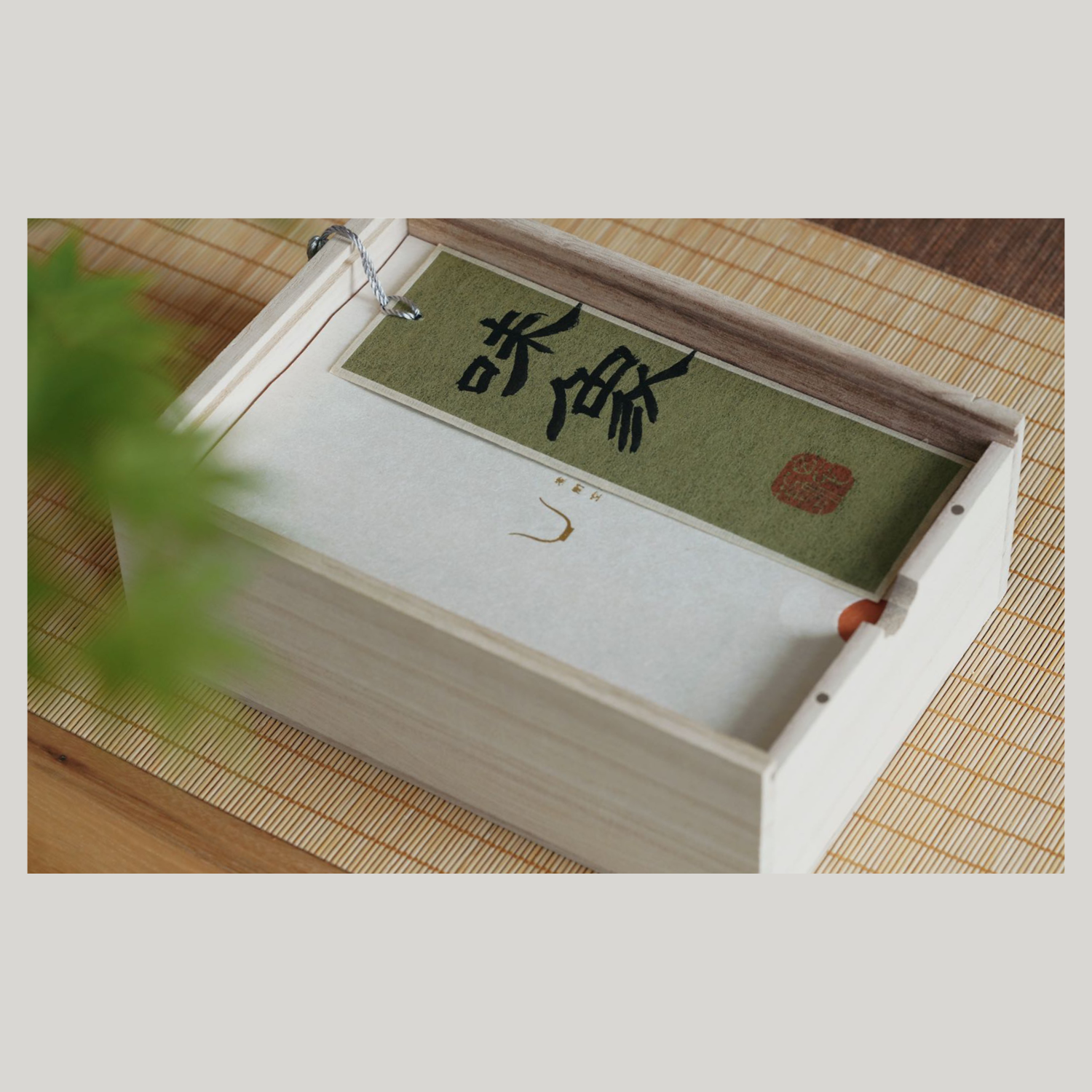 Image 7 of 11
Image 7 of 11

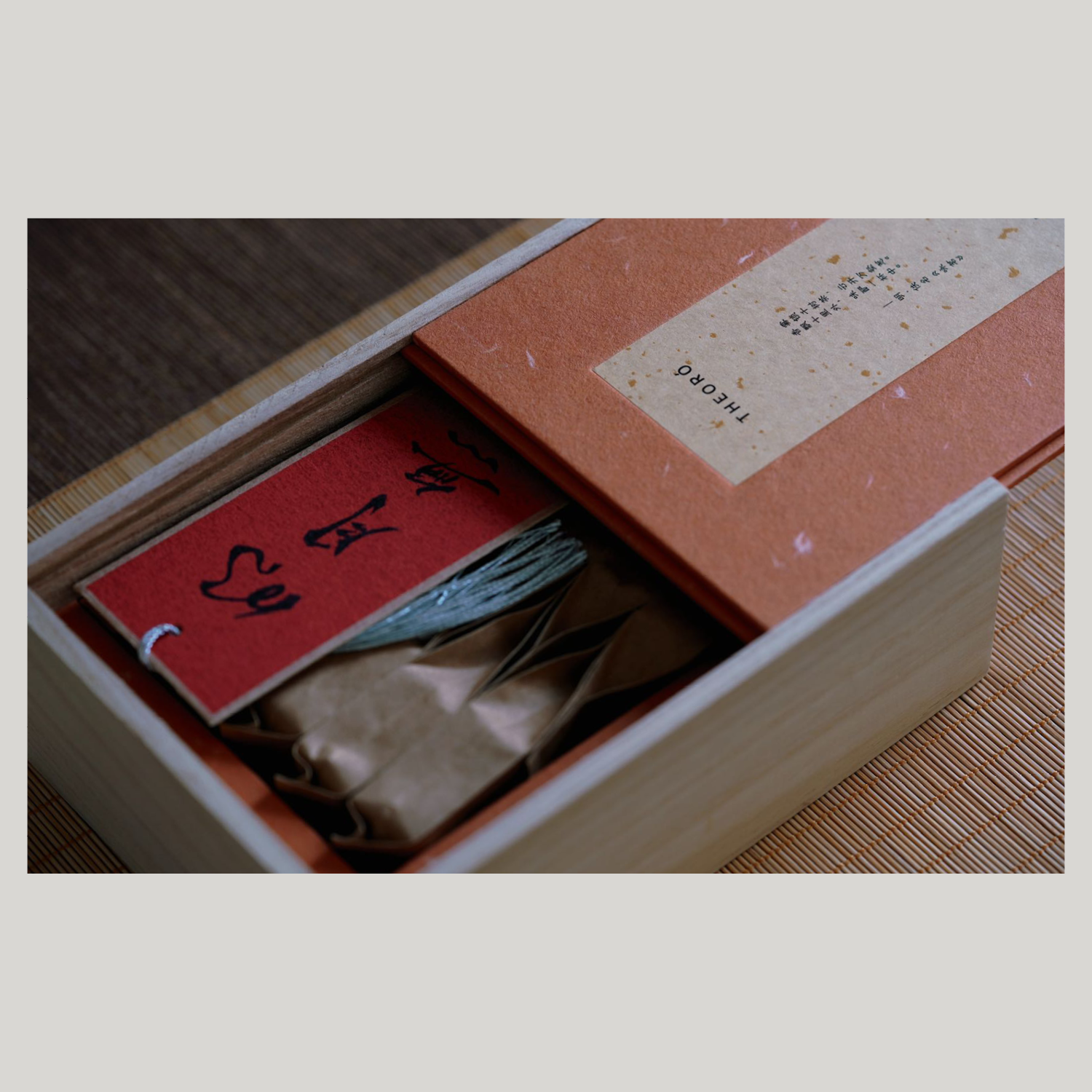 Image 8 of 11
Image 8 of 11

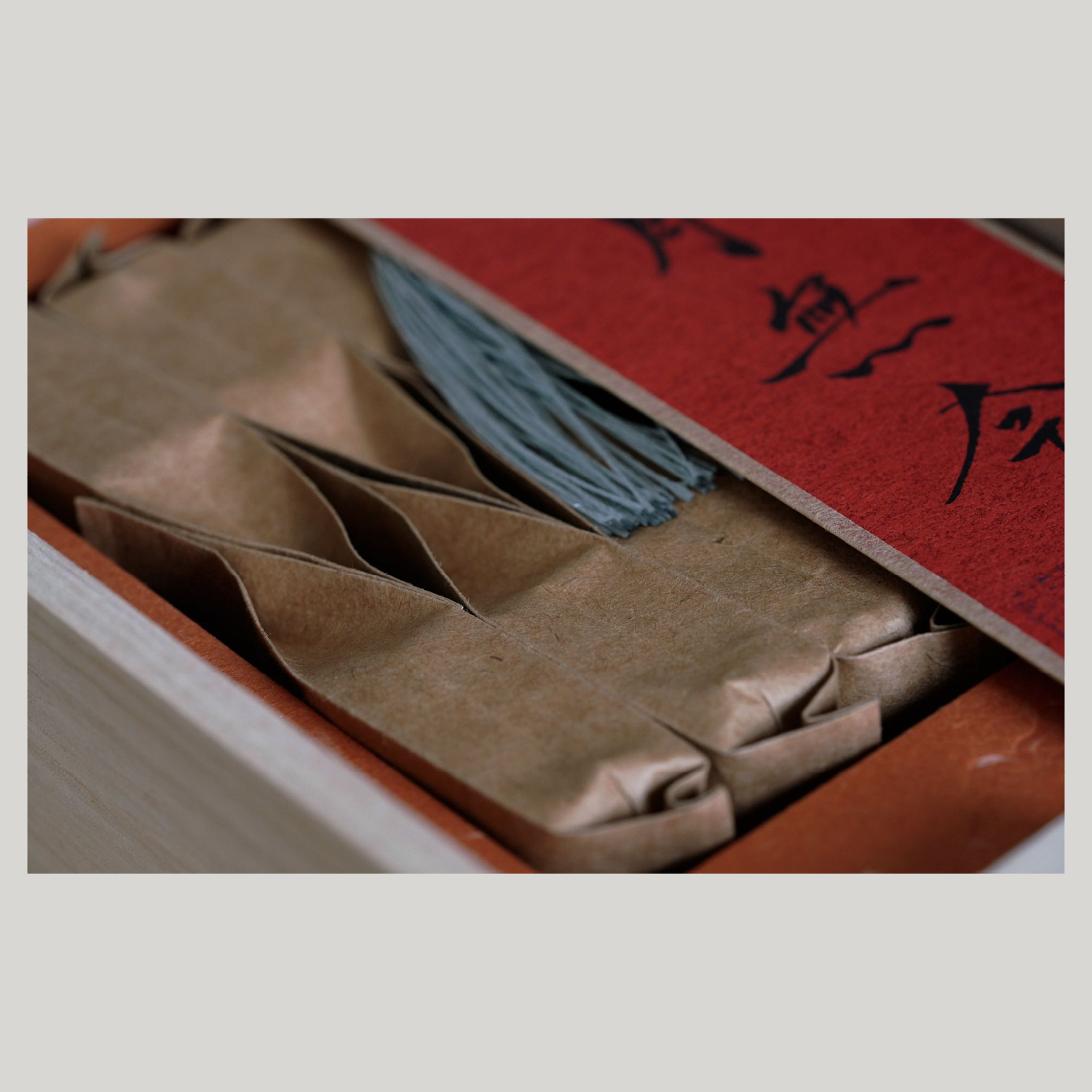 Image 9 of 11
Image 9 of 11

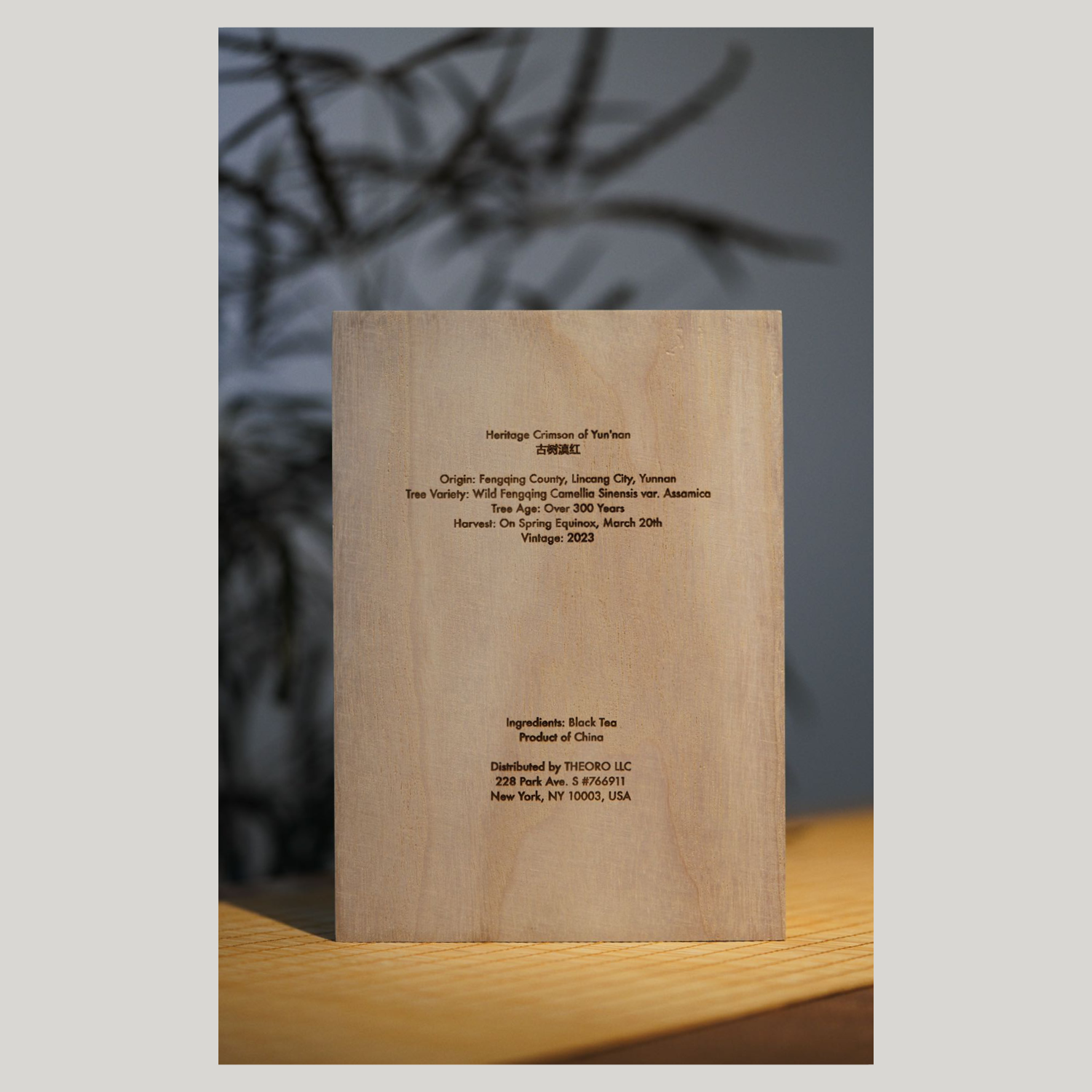 Image 10 of 11
Image 10 of 11

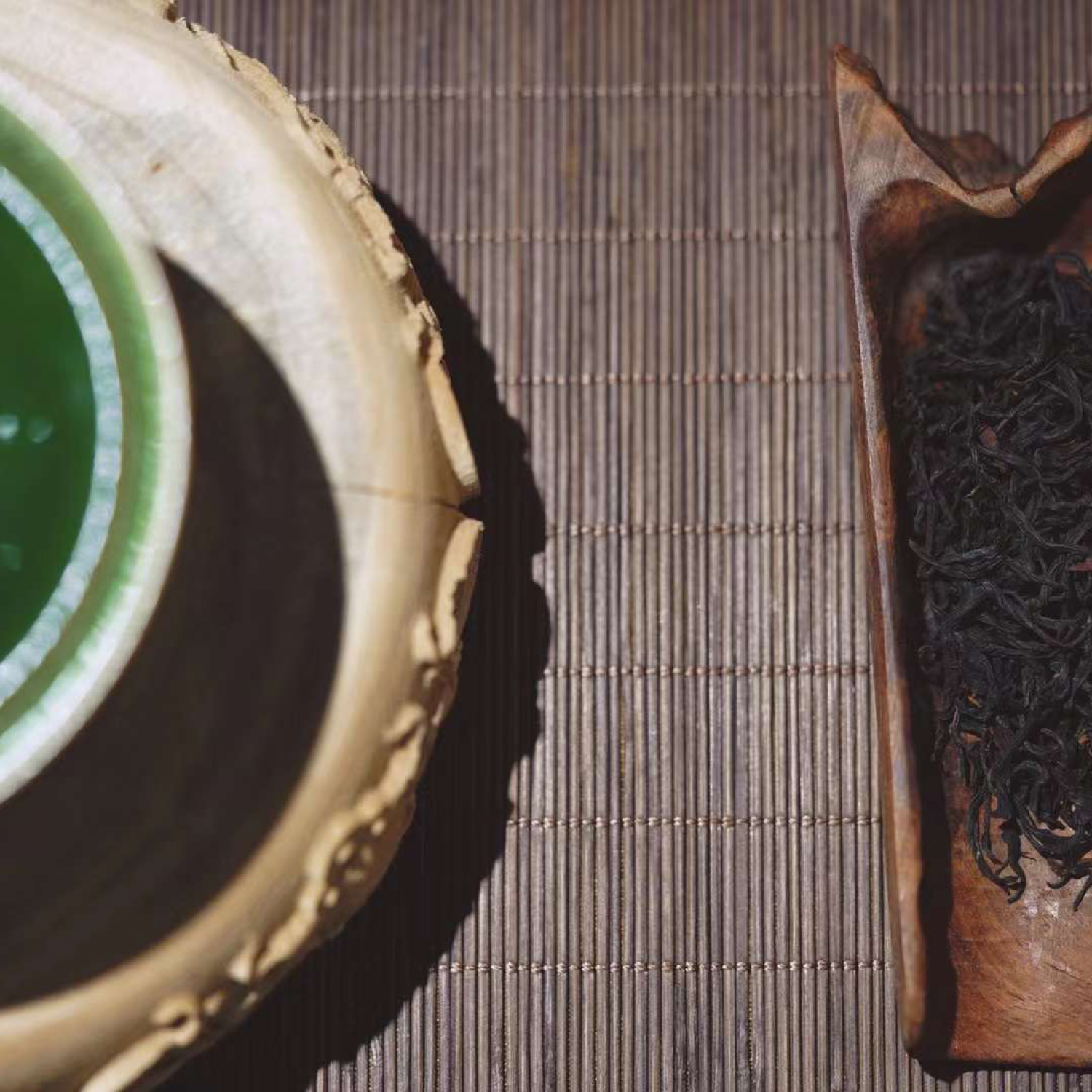 Image 11 of 11
Image 11 of 11












Ritual Black
Heritage Crimson of Yun'nan
古树滇红
Origin: Yunnan, Lincang City, Fengqing County
Tree Variety: Wild Fengqing Camellia Sinensis var. Assamica
Tree Age: Over 300 Years
Harvest: Spring Equinox, March 20th
Vintage: 2023
Each Box: 36g / 10 Packets / Makes 60+ Cups (487+ fl oz)
Each Packet: 3.6g / Makes 6+ Cups (48.7+ fl oz)
Maximum $0.83 per Cup ($1.64 per 16 fl oz)
Heritage Crimson of Yun'nan
古树滇红
Origin: Yunnan, Lincang City, Fengqing County
Tree Variety: Wild Fengqing Camellia Sinensis var. Assamica
Tree Age: Over 300 Years
Harvest: Spring Equinox, March 20th
Vintage: 2023
Each Box: 36g / 10 Packets / Makes 60+ Cups (487+ fl oz)
Each Packet: 3.6g / Makes 6+ Cups (48.7+ fl oz)
Maximum $0.83 per Cup ($1.64 per 16 fl oz)
Heritage Crimson of Yun'nan
古树滇红
Origin: Yunnan, Lincang City, Fengqing County
Tree Variety: Wild Fengqing Camellia Sinensis var. Assamica
Tree Age: Over 300 Years
Harvest: Spring Equinox, March 20th
Vintage: 2023
Each Box: 36g / 10 Packets / Makes 60+ Cups (487+ fl oz)
Each Packet: 3.6g / Makes 6+ Cups (48.7+ fl oz)
Maximum $0.83 per Cup ($1.64 per 16 fl oz)
Profile
Aroma: Honey, rose, musk
Flavor: Caramel, apricot, custard
Vitality: Smooth mouthfeel, full-bodied, honey-sweet lingering
Mood: Comforting, grounding, in-control
enjoyment
-
Water: Spring water or purified water.
Temperature: Approximately 200°F (93°C).
Tea-to-Water Ratio: 1 packet of tea per 1/2 cup of water for each infusion.
Tea Ware: Lidded bowl, small teapot.
Note: The recommended tea-to-water ratio and tea ware above are for the Gongfu brewing method. However, you can also use a more Western-style vessel, such as a large teapot, French press, or a water bottle with a removable filter. Simply match the water amount to the size of your chosen vessel.
-
1 ~ 6: Steep quickly, for about 5 seconds each.
> 6: Adjust steeping time according to personal preference.
Note: When using a Western-style vessel, adjust the steeping time based on the amount of water. For example, if you’re using a french press that holds 2 cups of water (4 times the volume of 1/2 cup), extend the brewing time for infusions 1–2 to 20 seconds for the Ritual Black.
-
Servings: For optimal enjoyment, use each packet for 12 ~ 15 infusions throughout the day.
Duration: Best enjoyed within 2 day.
When: Avoid on an empty stomach, and if you're sensitive to caffeine, skip it after dinner.
Frequency: Limit to 1 packet per day.
Note: When using a Western-style vessel, adjust the number of infusions based on the amount of water. For example, if you’re using a French press that holds 2 cups of water (4 times the volume of 1/2 cup), aim for 3–4 infusions per packet for the best experience.
-
Heavy fare such as BBQ, spicy hotpot, fried chicken, burger perfectly complements this tea. It also pairs elegantly with desserts on the sweeter side like macaron, gougères, bûche de noël, chocolate mousse, madeleines.
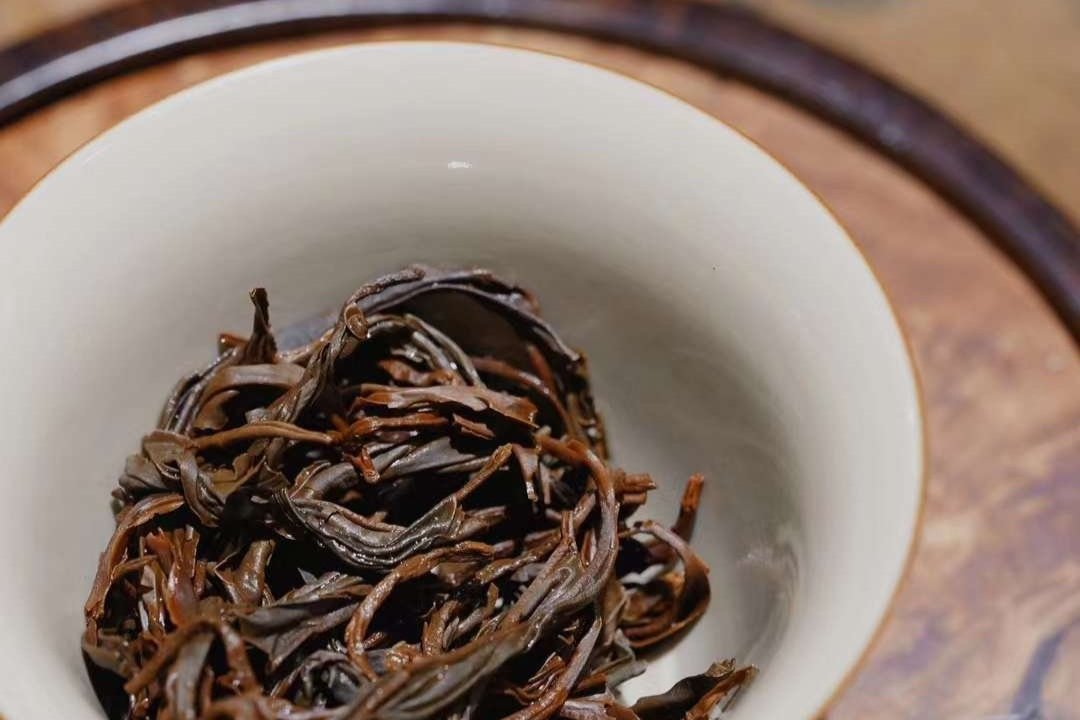
Legacy
The creation of black tea began during the Ming Dynasty, likely in a spring season when a tea factory in Tongmu Village was in the process of producing green tea. Suddenly, a passing army disrupted the usual tea-making process, which affected the normal steps of fixation. By the time the soldiers had passed, the tea farmers, anxious and rushed, returned to find that the tea leaves had oxidized and turned red due to natural conditions.
The villagers, living frugally in the mountains, were reluctant to waste the tea leaves. So, they dried the oxidized tea using local pine wood to finish the process. To their surprise, when brewed, this tea turned out to be even sweeter and more flavorful than green tea, with a smooth taste, free of bitterness or astringency. Over time, this accidental process was preserved, forming the traditional technique unique to black tea production.
In 1938, the National Tea Company of China appointed Feng Shaoxi, Fan Hejun, and others to visit tea-growing regions such as Fengqing and Menghai to explore the potential of using fresh leaves from Camellia sinensis var. assamica grown in Yunnan to produce black tea. In 1939, the Shunning Experimental Tea Maker (the predecessor of the Fengqing Tea Maker), founded by Feng Shaoxi, began production even as the facility was still under construction. That year, they produced 16.7 tons of Gongfu-style black tea, which was exported to Britain the following year, in 1940. In September of the same year, the Bohai Experimental Tea Maker (the predecessor of the Menghai Tea Maker) was established and also successfully produced high-quality Crimson of Yun'nan.
Feng Shaoxi, recognized as the Father of Mechanized Tea in China and the founder of Crimson of Yun'nan, described it in his book A Brief History of Crimson of Yun'nan: “Crimson of Yun'nan is renowned worldwide for its distinctive high aroma and rich flavor, celebrated both domestically and internationally for its unique appearance and vibrant color.”
Authenticity
-
The main production areas of Crimson of Yun'nan are along the Lancang River in Yunnan, covering over 20 counties across the cities and prefectures of Lincang, Baoshan, Pu'er, Xishuangbanna, Dehong, and Honghe.
Fengqing County, in Lincang City, is considered the origin of Crimson of Yun'nan and is regarded as the most authentic source.
THEORÓ Ritual Black comes from Fengqing County.
-
Traditional Crimson of Yun'nan uses leaves from Camellia sinensis var. assamica as its raw material. These tender leaves have a higher polyphenol content compared to Camellia Sinensis var. Zhongye or Camellia Sinensis var. Sinensis. After oxidation, they contain elevated levels of theaflavins and thearubigins, along with higher caffeine and water-soluble content, distinguishing them from other types of black tea.
In a wild environment, plants grow naturally and follow the principle of survival of the fittest. The vegetation is more diverse, and the soil benefits from the roots of various plants growing deep into the ground. This allows the tea trees to absorb a wide range of nutrients. In contrast, in a managed tea garden where the same species is grown, the nutrients are more limited. As a result, the aroma and flavor of the tea are less complex. Wild Camellia sinensis var. assamica, however, produce a richer, more layered, and intense flavor.
THEORÓ Ritual Black uses leaves from wild Fengqing Camellia sinensis var. assamica.
-
Most artificially cultivated Camellia sinensis var. assamica trees are under 100 years old. Those that are manually managed typically range between 100 and 200 years old, while trees over 300 years old are considered of exceptional quality.
THEORÓ Ritual Black is harvested from trees that are over 300 years old.
-
In recent years, it has become rare to find high-quality Dianhong made from spring tea leaves, which are known for their dark, glossy dry leaves, full body, and tender, uniform buds. Most Dianhong available now comes from summer and autumn harvests. Spring tea offers a fresh aroma and a smooth, delicate taste, while summer tea tends to be coarser with a slight bitterness, and autumn tea is more fragrant but has a lighter body.
High-quality Crimson of Yun'nan is judged by its smooth, refined taste, rich floral aroma, and honey-like sweetness, free from grassy or off-flavors. This highlights that spring tea is superior to autumn tea, with both being preferable to summer tea. Spring harvest usually begins in mid-March and lasts until the end of April.
THEORÓ Ritual Black is harvested on the date of the Spring Equinox, March 20th.
-
For highly aromatic teas like Crimson of Yunnan, known for their honey sweetness and strong fragrance, the flavor remains largely unchanged if properly sealed for up to five years. After five years, the tea undergoes a transformation, with the aroma evolving into notes of roasted chestnuts, along with subtle earthy and woody tones. The flavor becomes more mellow and refined, yet still very enjoyable.
Crimson of Yunnan, like all other black teas, does not have an expiration date. The age of the tea doesn’t indicate whether it’s better or worse; it’s simply a matter of personal preference.
THEORÓ Ritual Black is from the year 2023.
Craftsmanship
-
This process ensures that fresh tea leaves lose moisture evenly. As the leaves lose water, their internal substances undergo physical and chemical changes. Enzyme activity increases, leading to the breakdown of insoluble proteins, starches, and other components. Tea polyphenols also begin to oxidize.
Freshly plucked leaves typically contain about 75% moisture. At this point, the buds and leaves are full of water, making the leaf cells firm and elastic, but also fragile. When pressure is applied, they easily break into small pieces. During the withering process, some water evaporates, causing the cell membranes to relax and wrinkle, making the leaves more flexible. This softens the leaves, allowing them to be rolled into strips without breaking.
In the production of black tea, the withering process is typically controlled for 10-18 hours to enhance enzyme activity, preparing the leaves adequately for rolling and oxidation. During the spring tea-making season, when it often rains in the mountains, tea makers usually use heated withering troughs for the withering process.
-
In modern black tea production, disc-type rolling machines are commonly used. These machines are more efficient than manual rolling, breaking down the cell structure of the tea leaves more thoroughly. This helps create well-shaped tea leaves and provides better conditions for the enzymatic oxidation of polyphenols. The shift from manual to machine rolling is a significant improvement in black tea production.
Claims that hand-rolled black tea is superior are largely marketing tactics. In reality, large-scale tea production is labor-intensive and can't rely solely on manual methods. In the past, before electricity, rolling was done with water-powered machines, hand-cranked wooden rollers, or even by using feet and body weight on stone or wooden boards.
The rolling process serves two main purposes: first, to break down the leaf's cell structure and shape the tea; second, to help internal substances in the leaves interact as the cells are broken down.
By applying kneading and twisting forces, the cell structure of the withered tea leaves is disrupted, releasing tea juices that coat the surface. This reduces the surface area, tightly curls the leaves into strips, and completes their physical transformation. At the same time, the polyphenols are fully exposed to enzymes and oxygen, triggering rapid enzymatic oxidation and promoting the chemical transformations essential to tea production.
-
The oxidation of black tea happens under the right conditions of temperature, humidity, and enough oxygen. This process starts when the tea leaves' cell membranes break down, allowing the polyphenols to undergo enzymatic oxidation.
This oxidation is key to creating black tea’s main qualities, including its color, aroma, flavor, and shape. Theaflavins, formed by the oxidation of catechins, play an important role in shaping the tea's color, aroma, and flavor, and they give the tea its golden, clear, and glossy appearance. The tea's red color is mainly due to the presence of thearubigins.
-
Drying is the final and crucial step in black tea production. Even with high-quality fresh leaves and proper withering, rolling, and oxidation, improper drying can diminish or even ruin the tea’s quality. The main purpose of drying is to deactivate the enzymes and stop the oxidation process. Most black tea is dried using electric machines.
First, high temperatures rapidly evaporate moisture, halting enzyme activity and preventing further oxidation. This preserves the positive changes from earlier steps like withering, rolling, and oxidation. As moisture continues to evaporate, the tea leaves shrink, setting their shape and making them easier to store and transport. Additionally, the heat during drying enhances the tea’s aroma, improving its overall quality.

